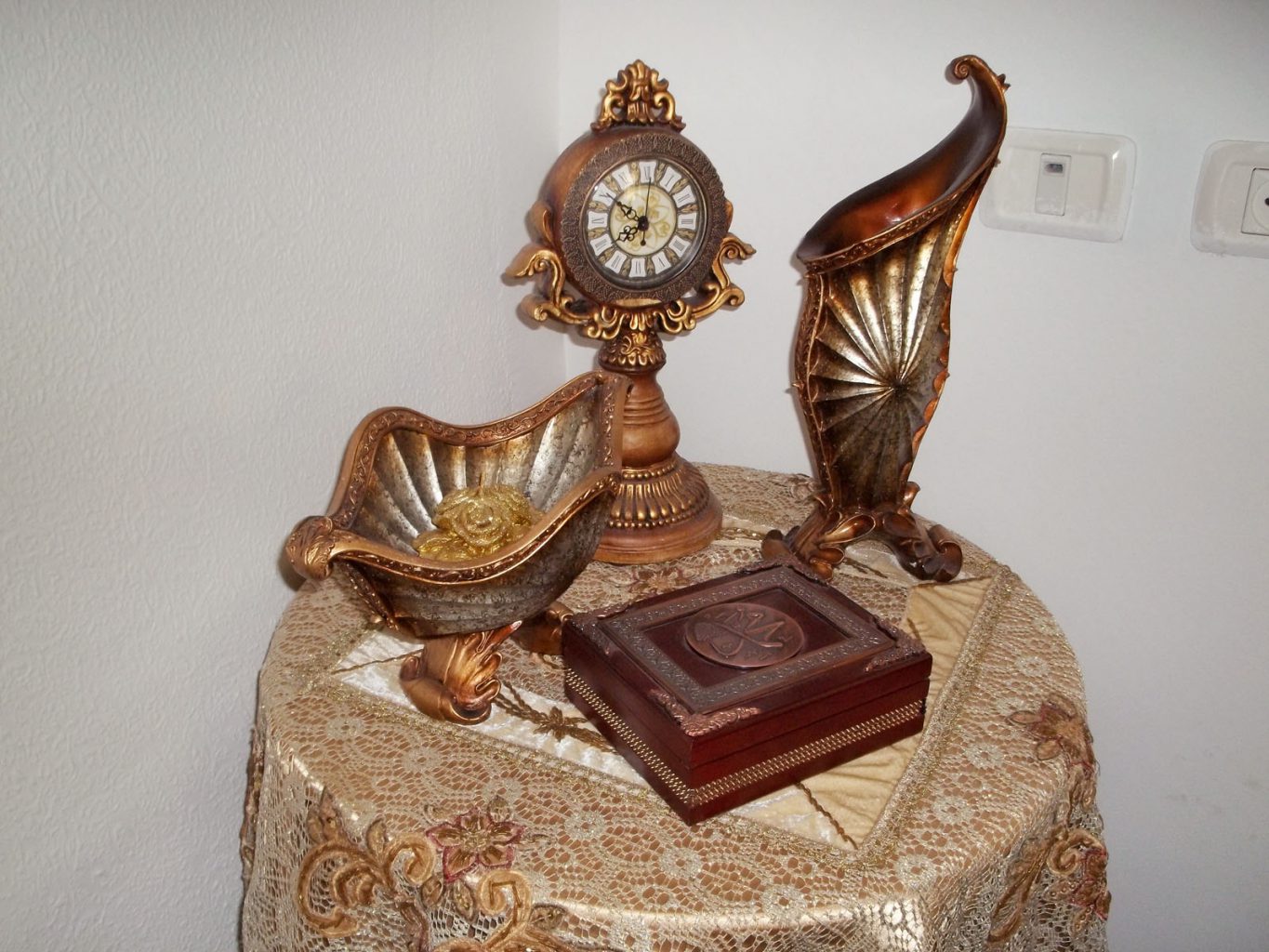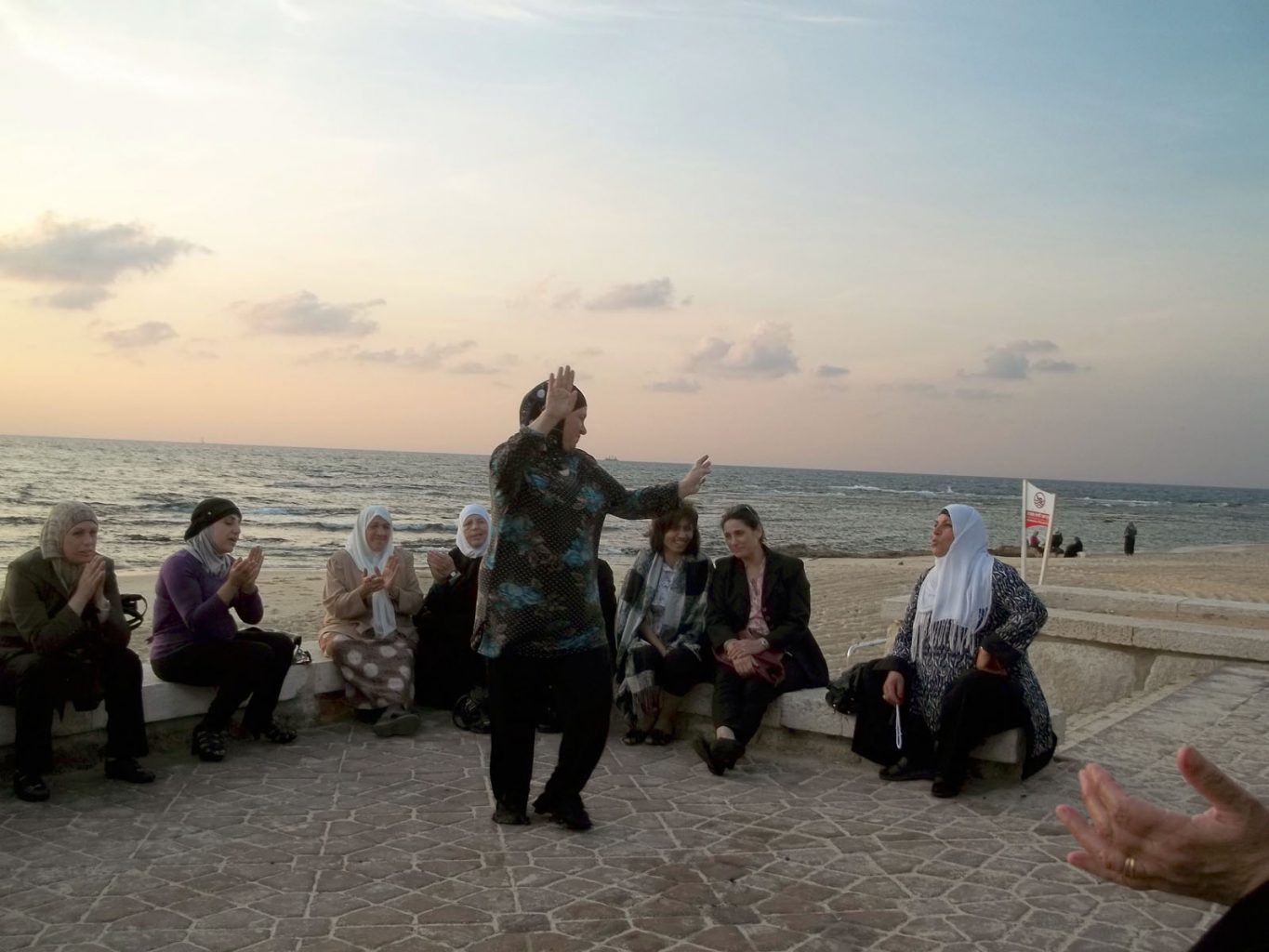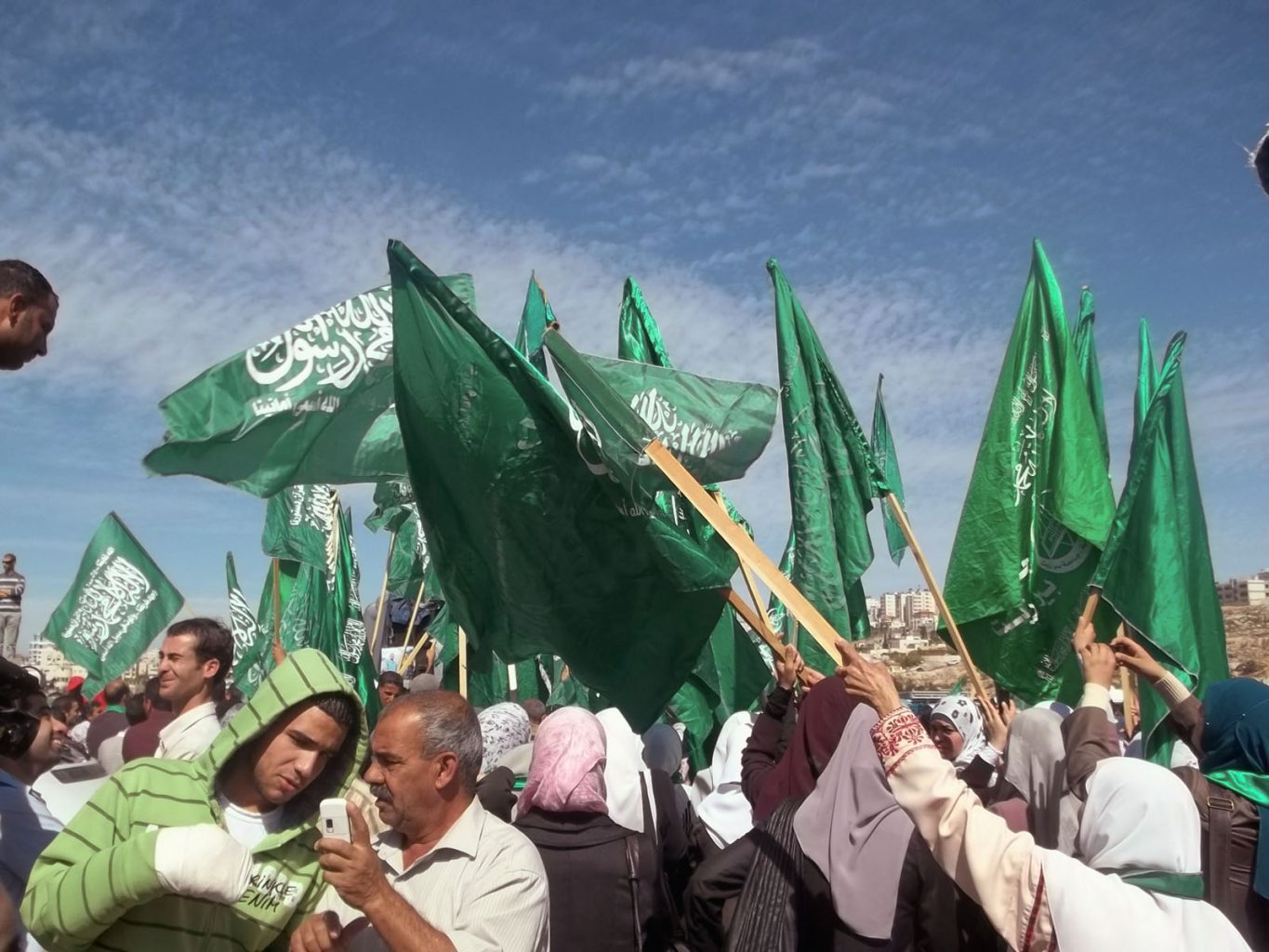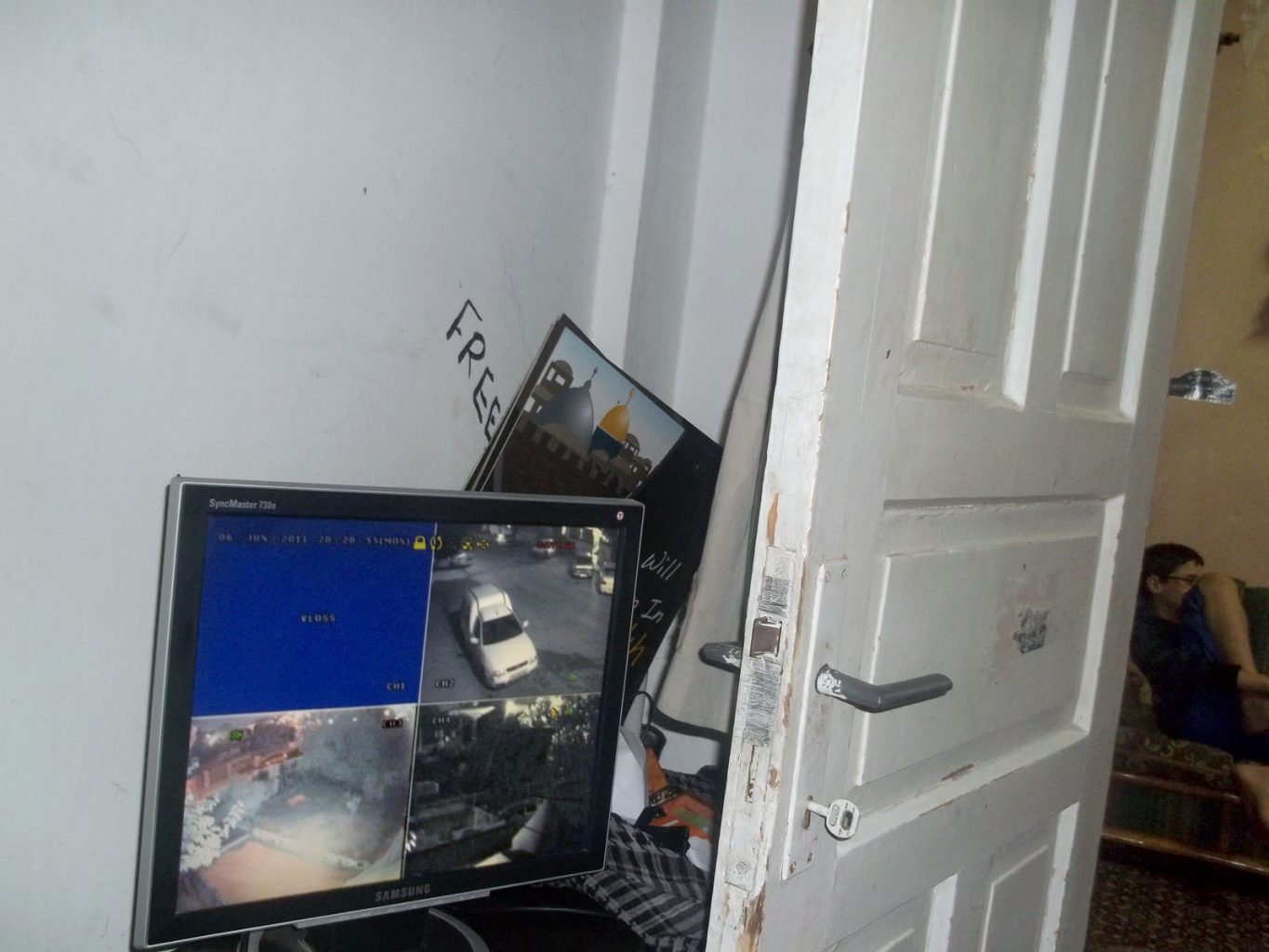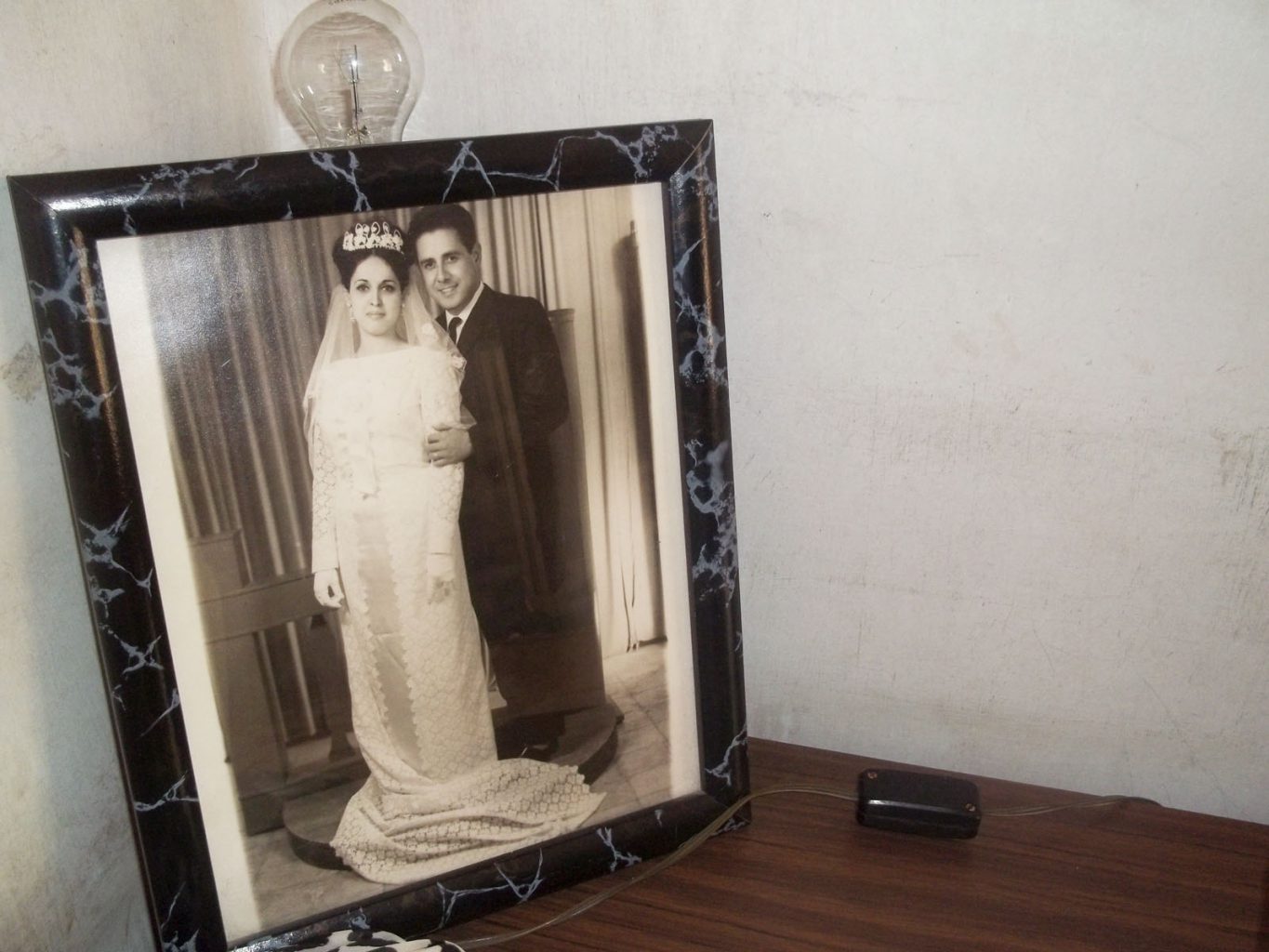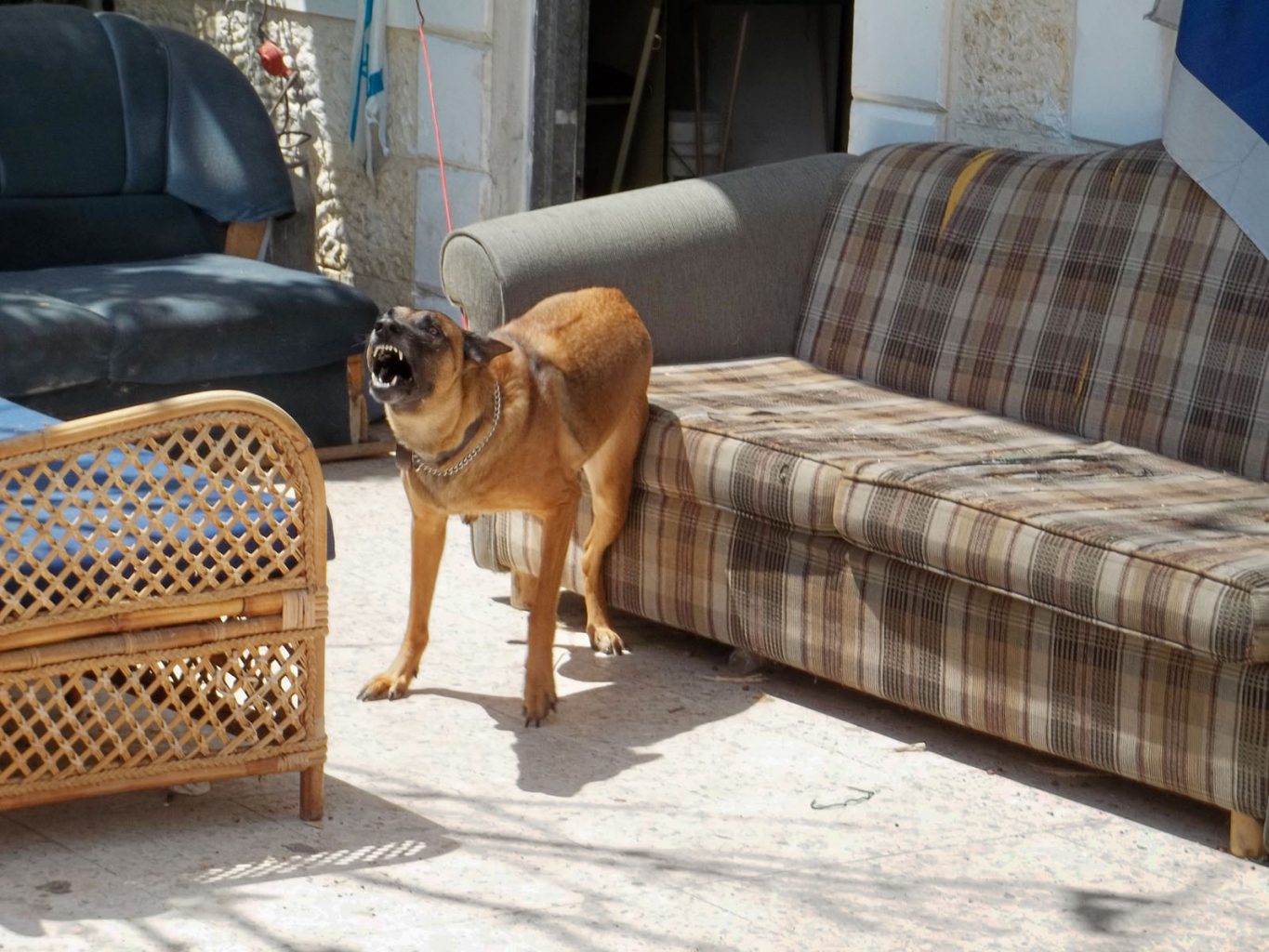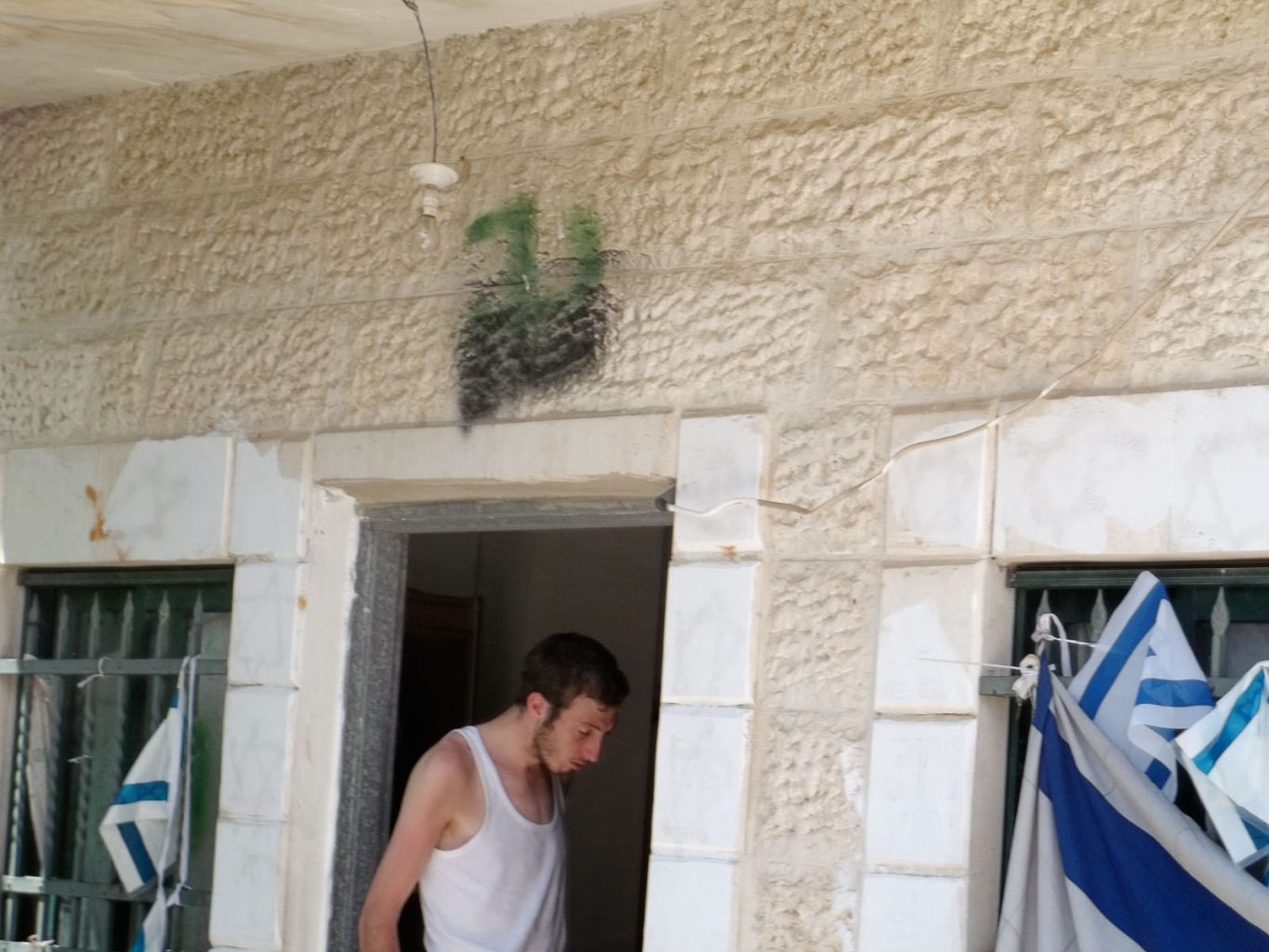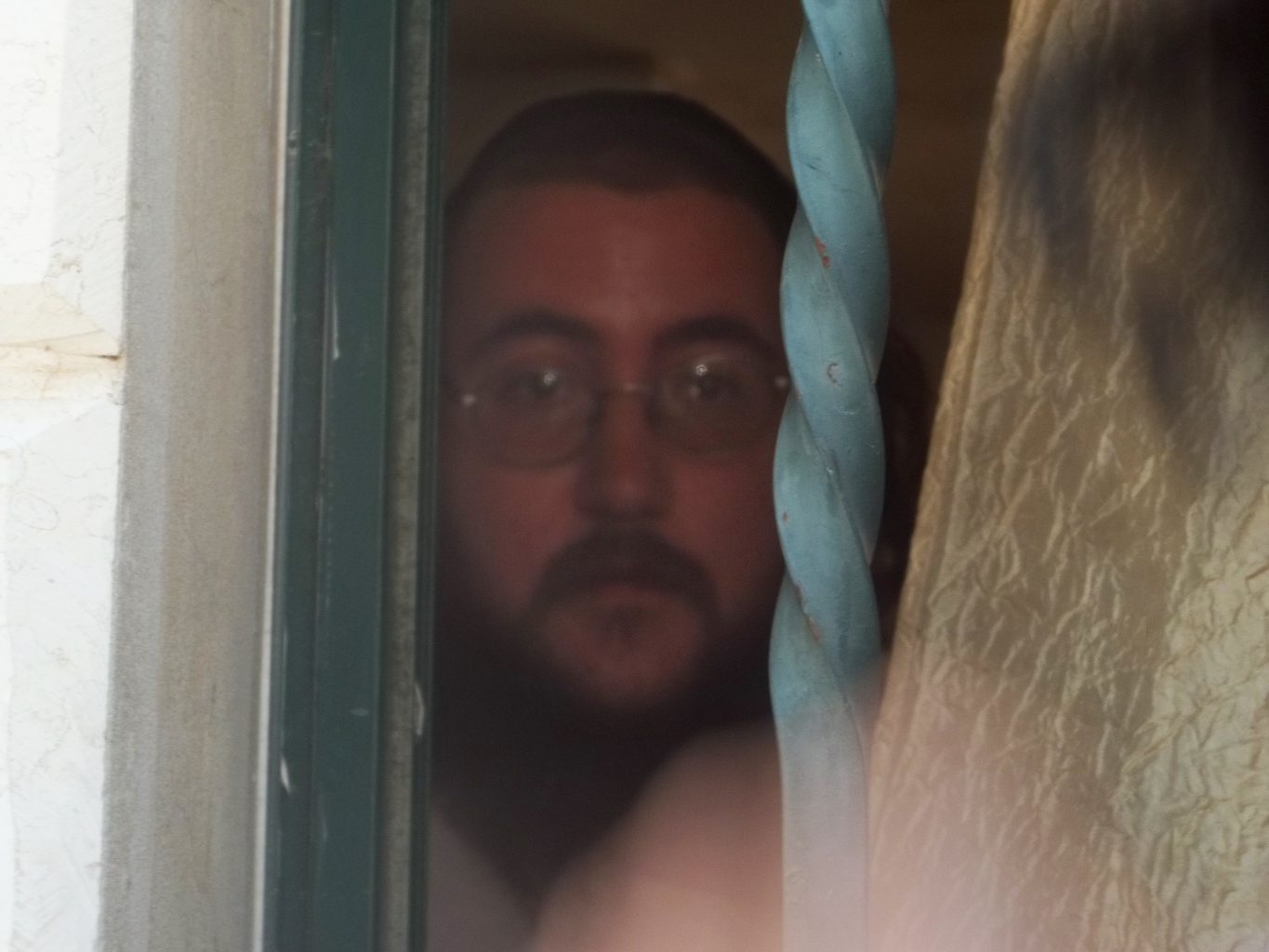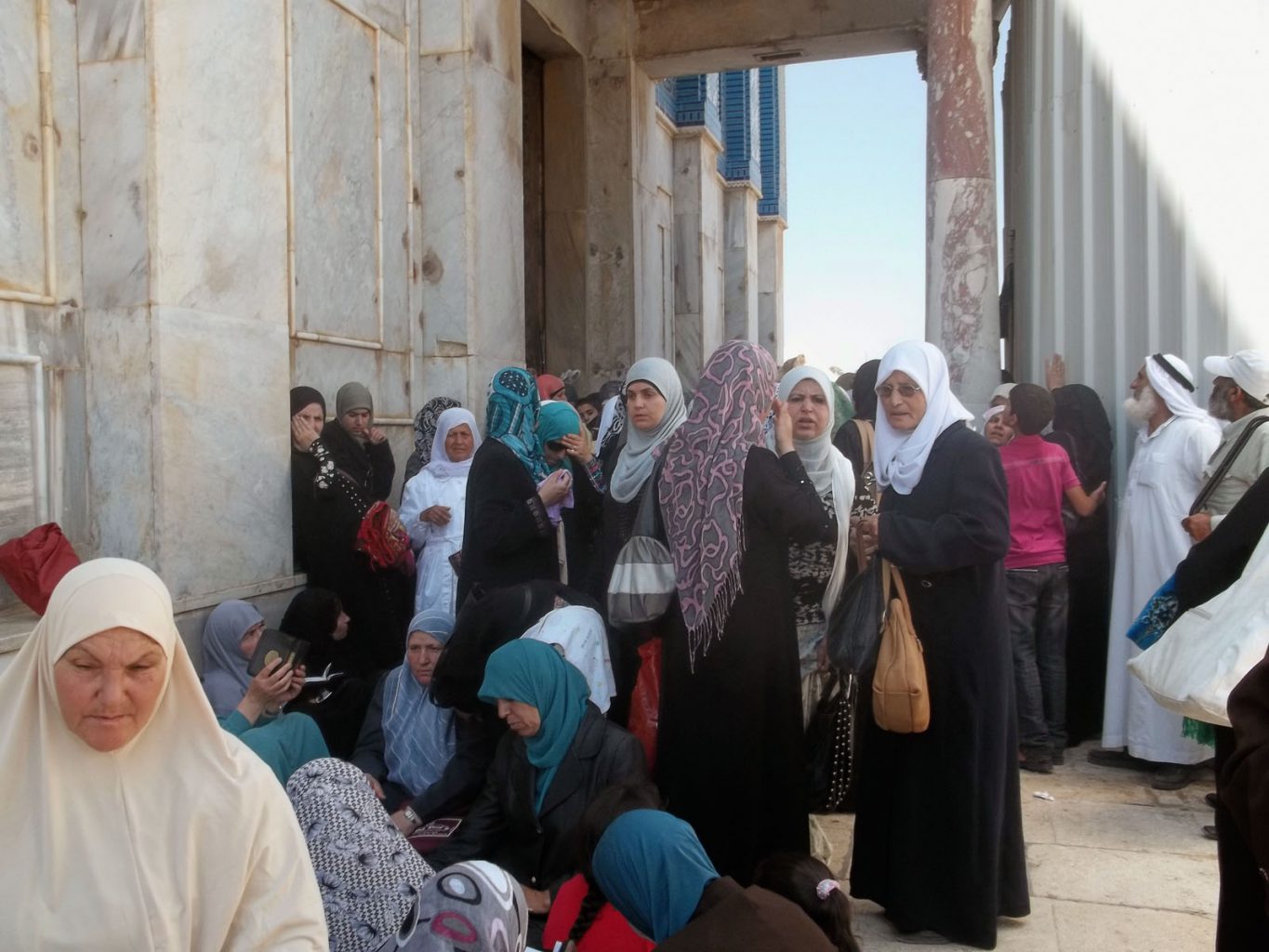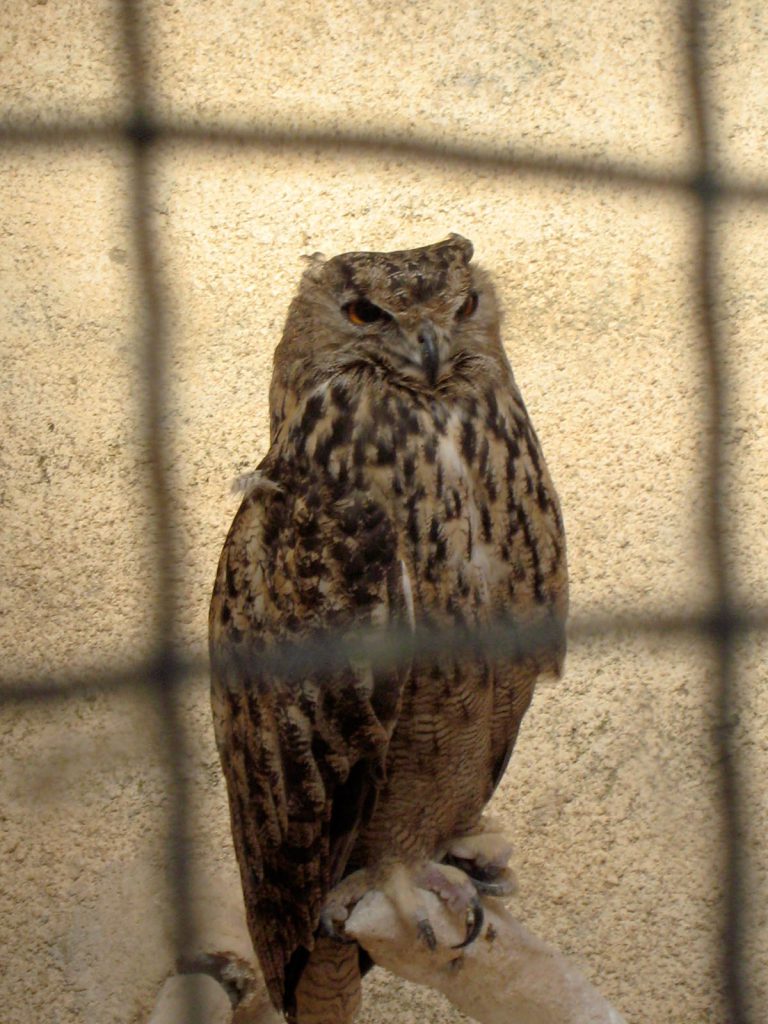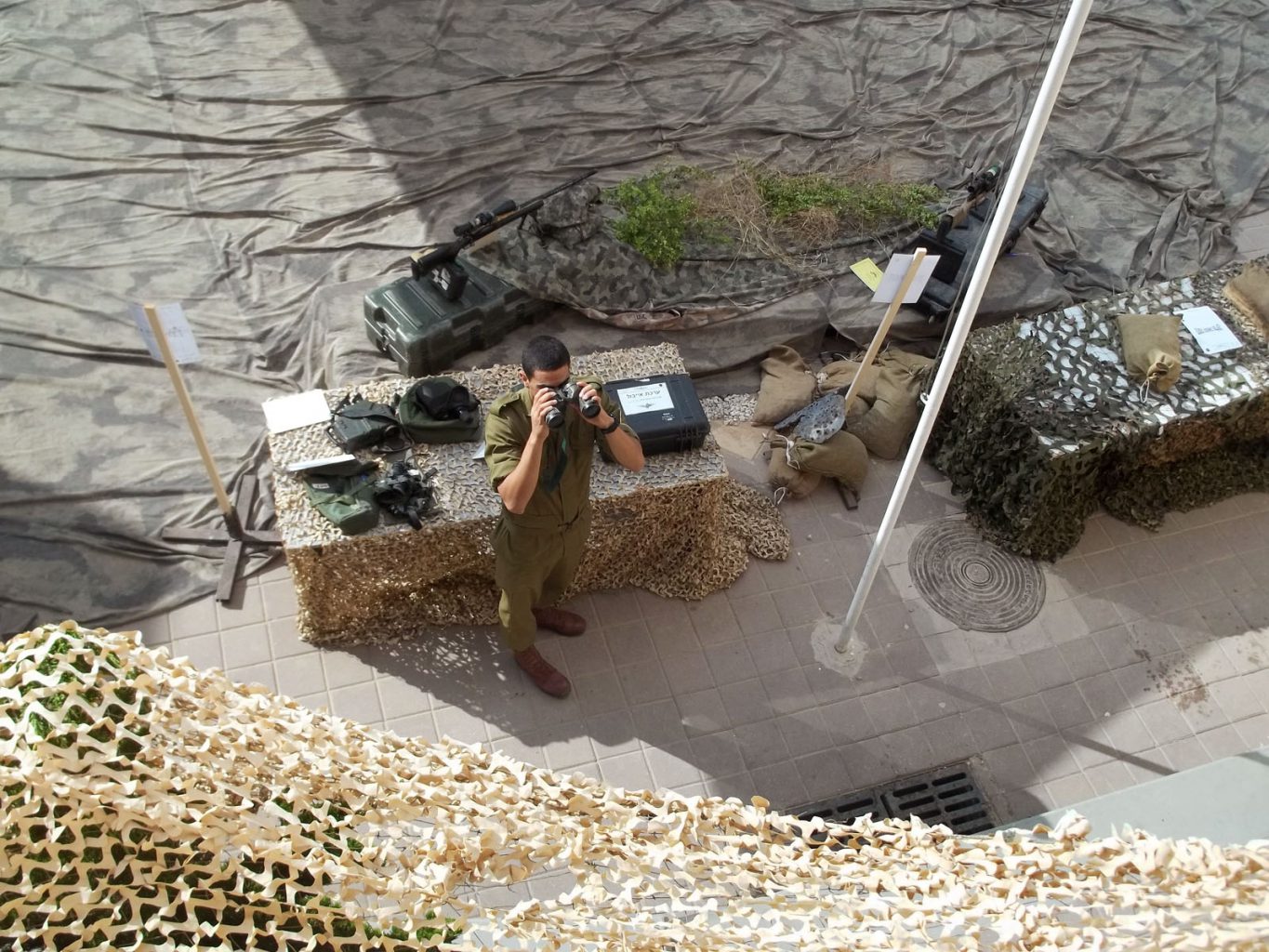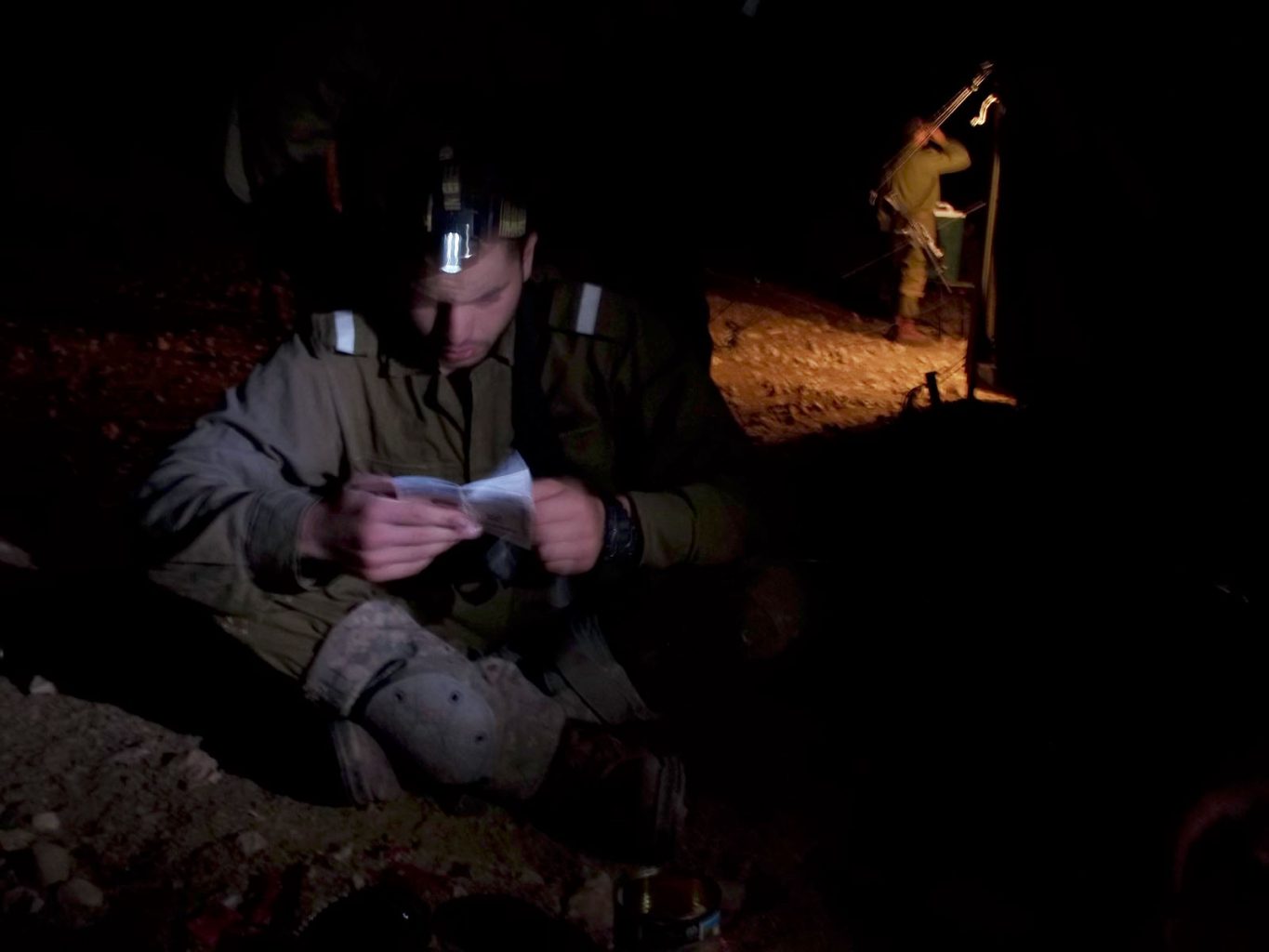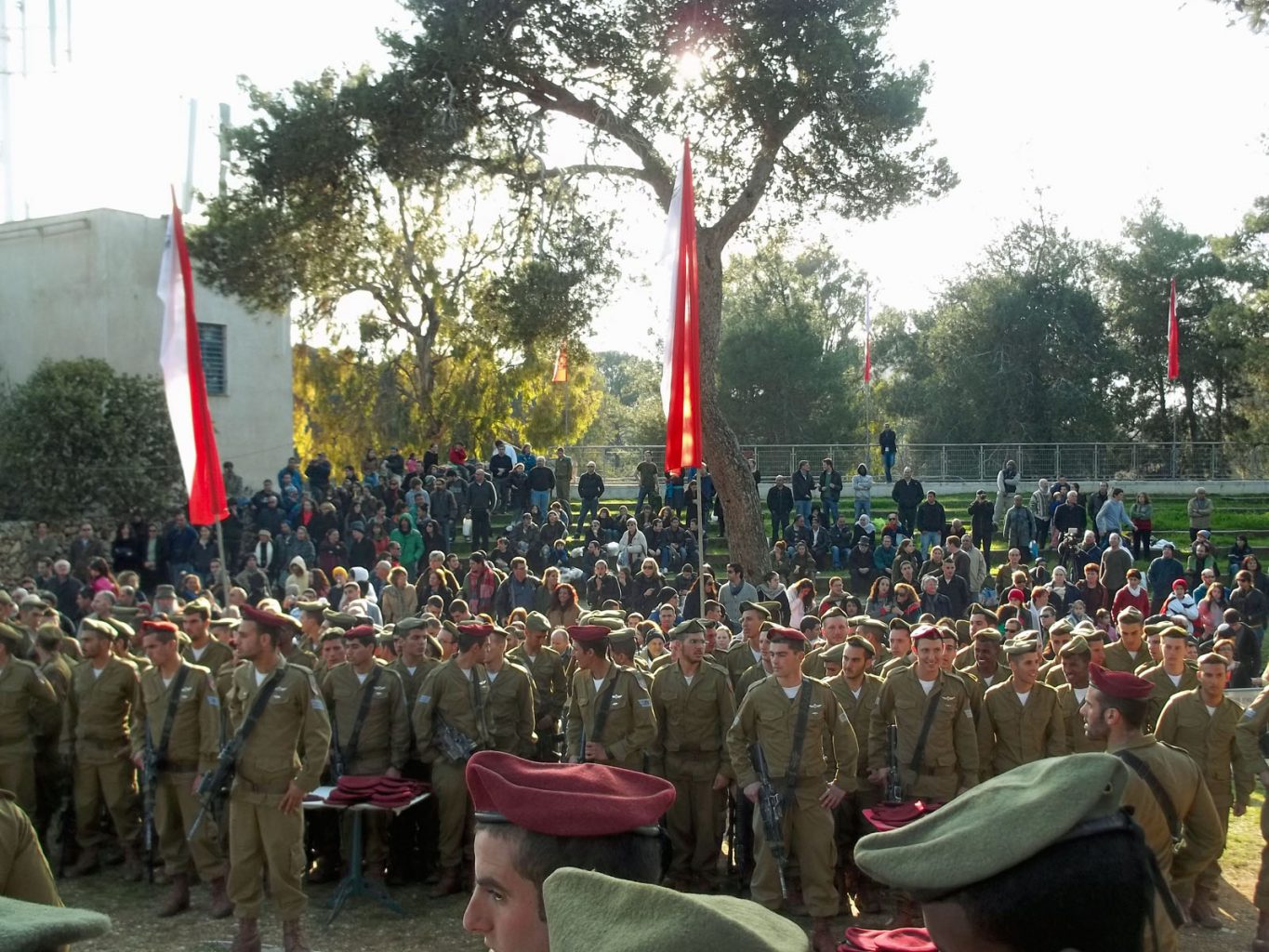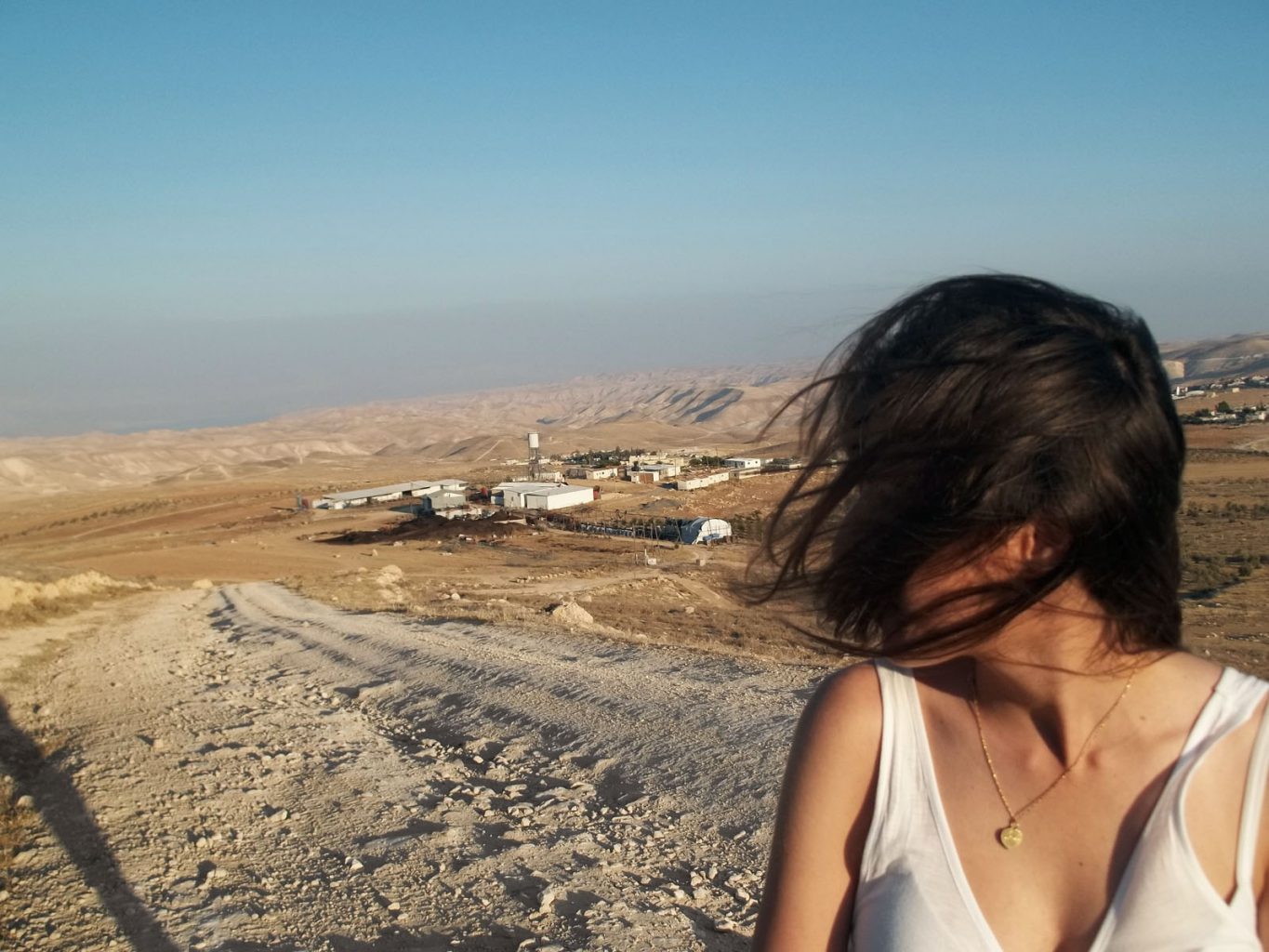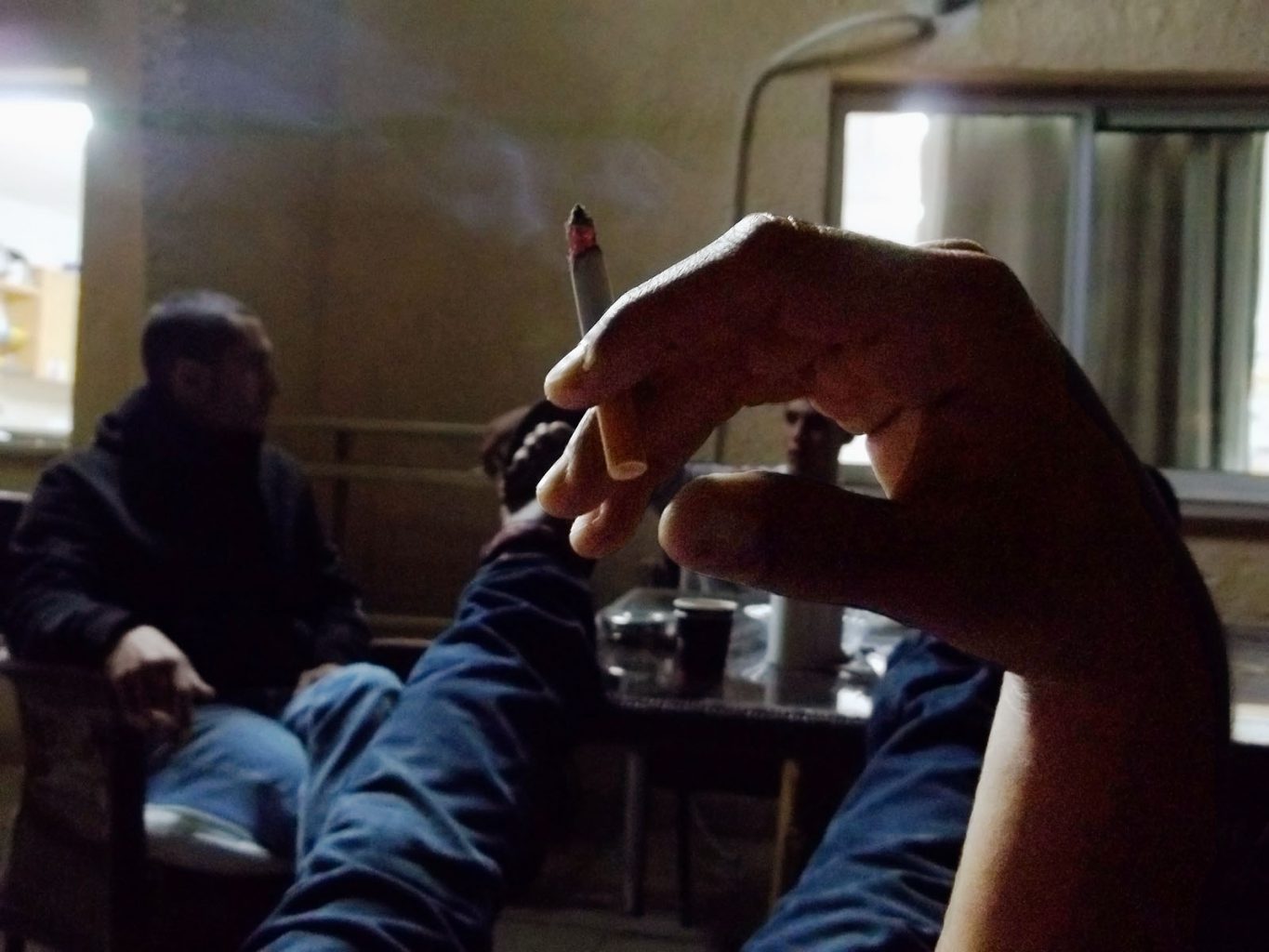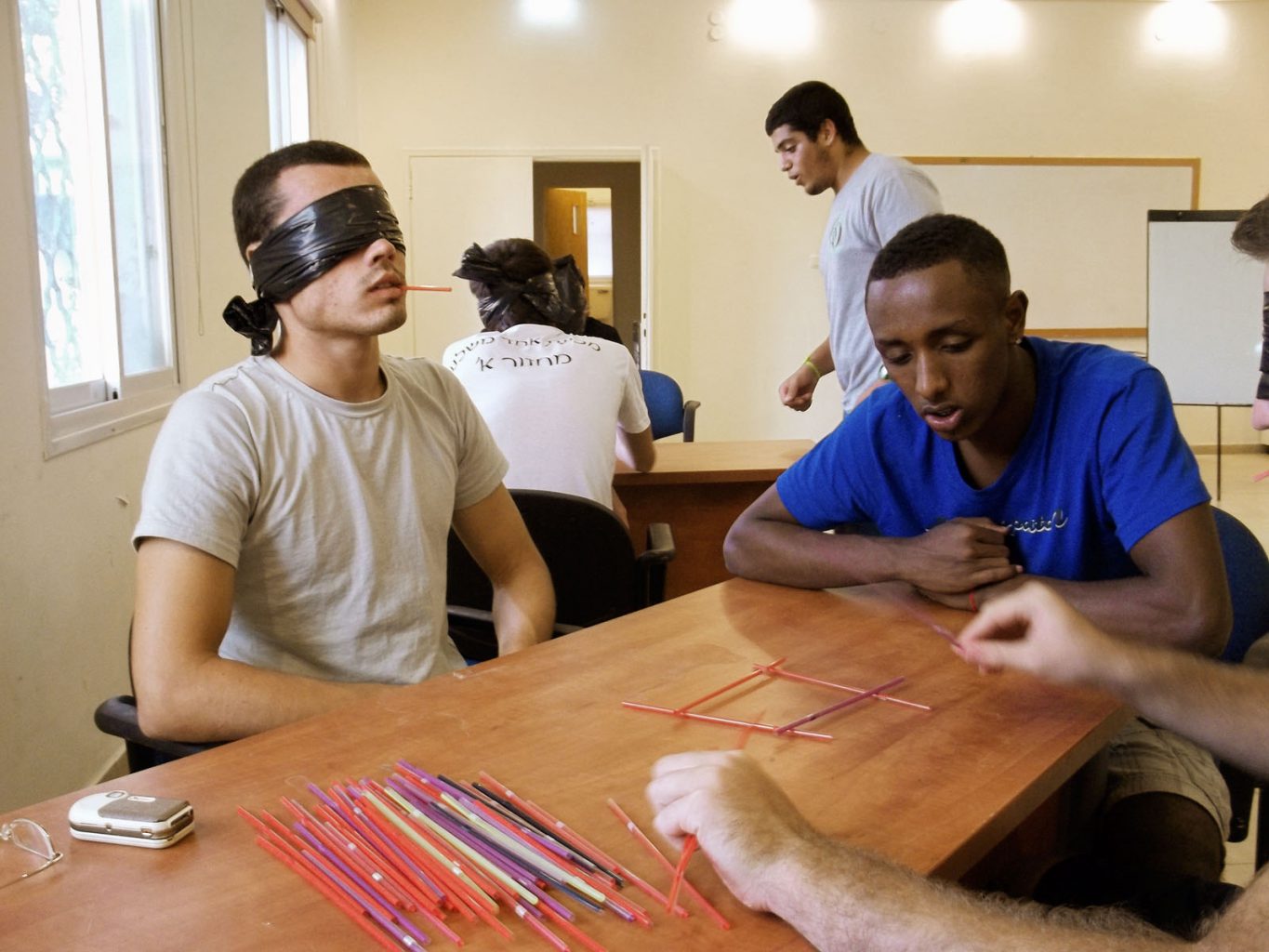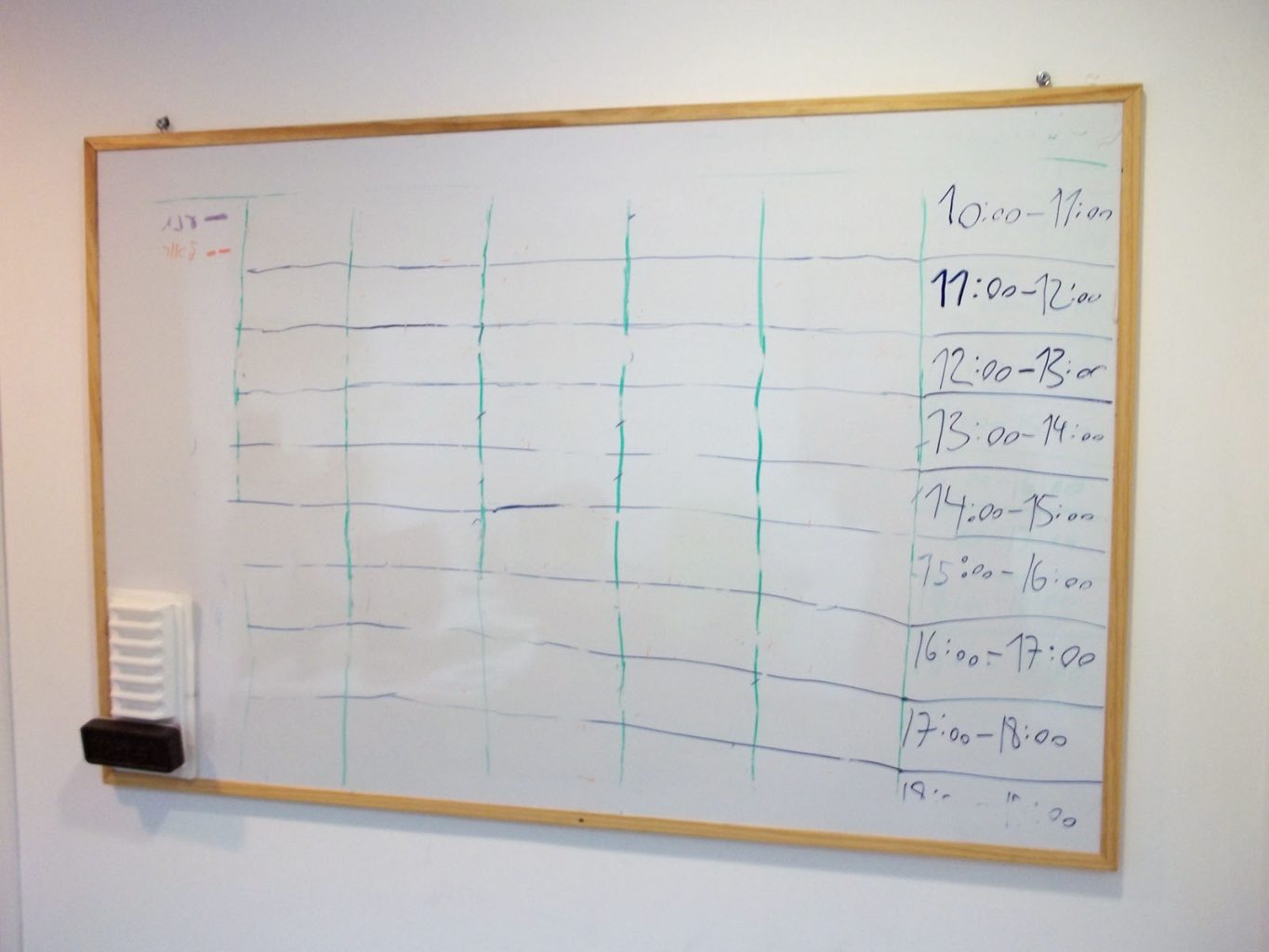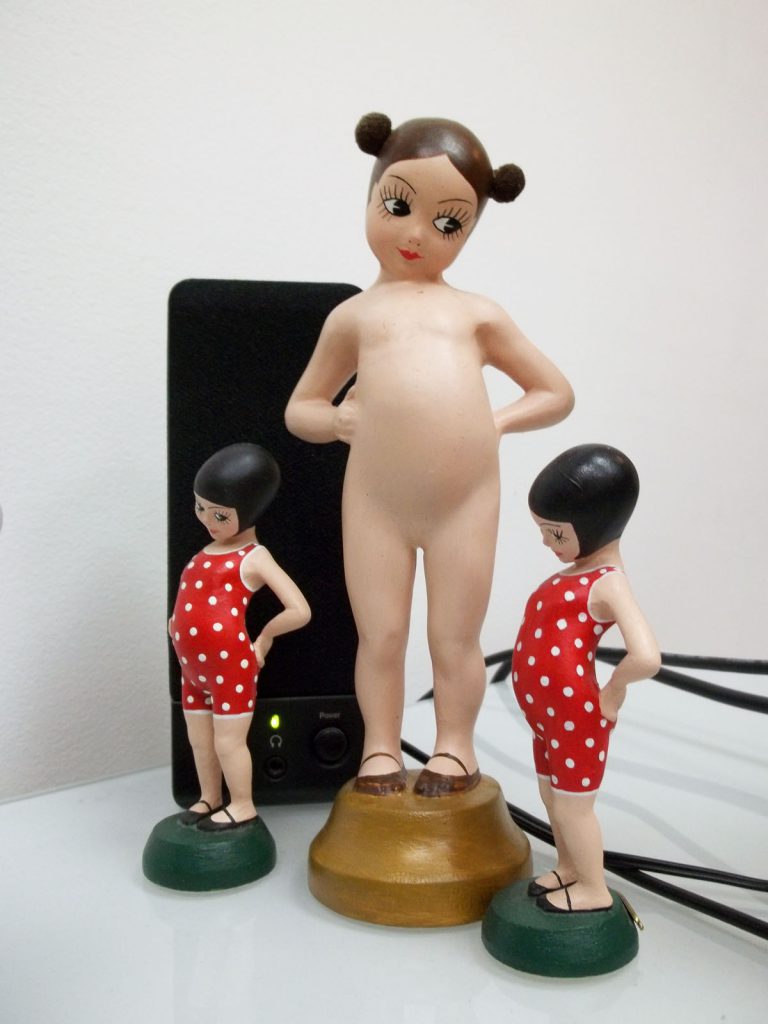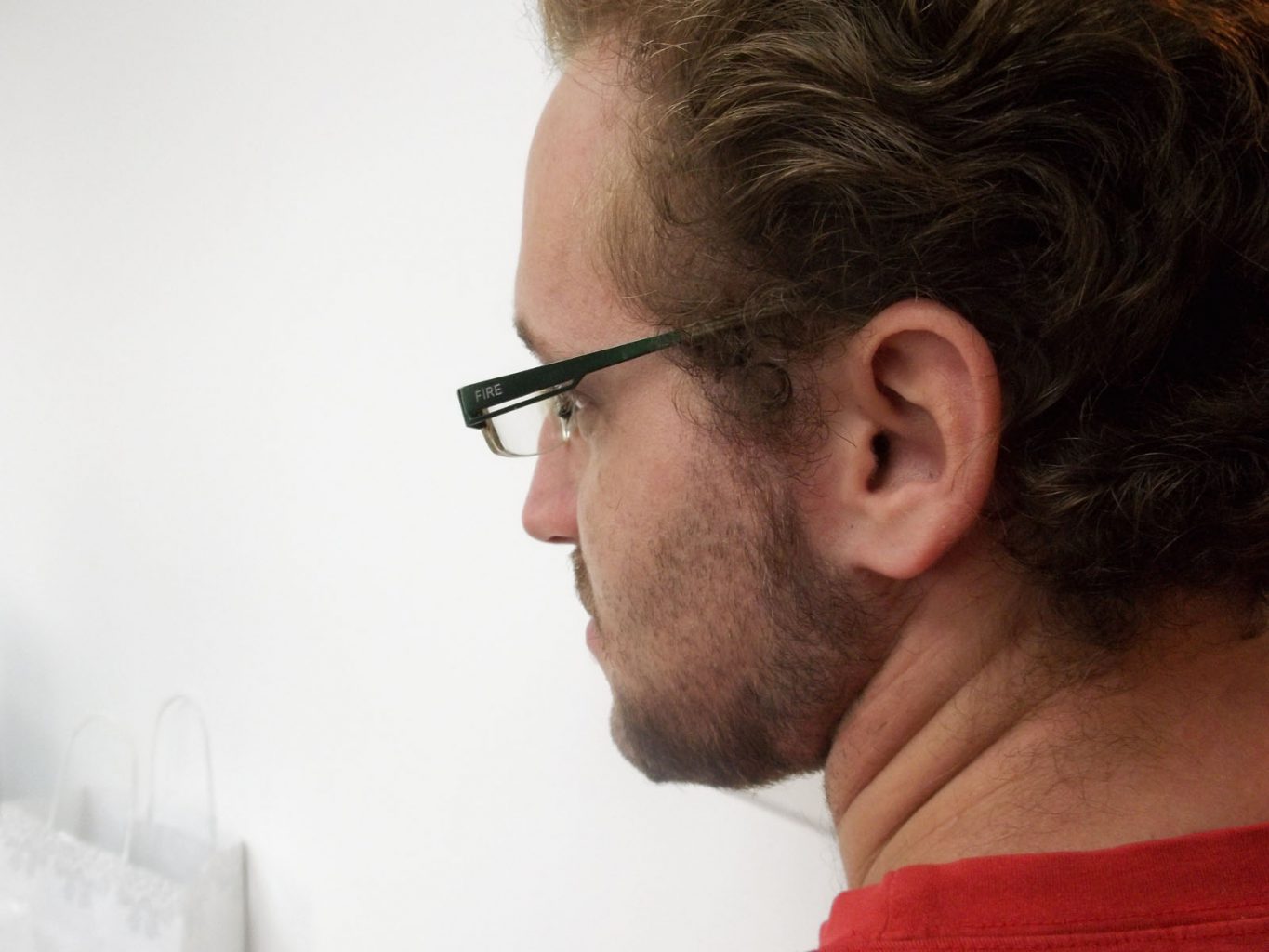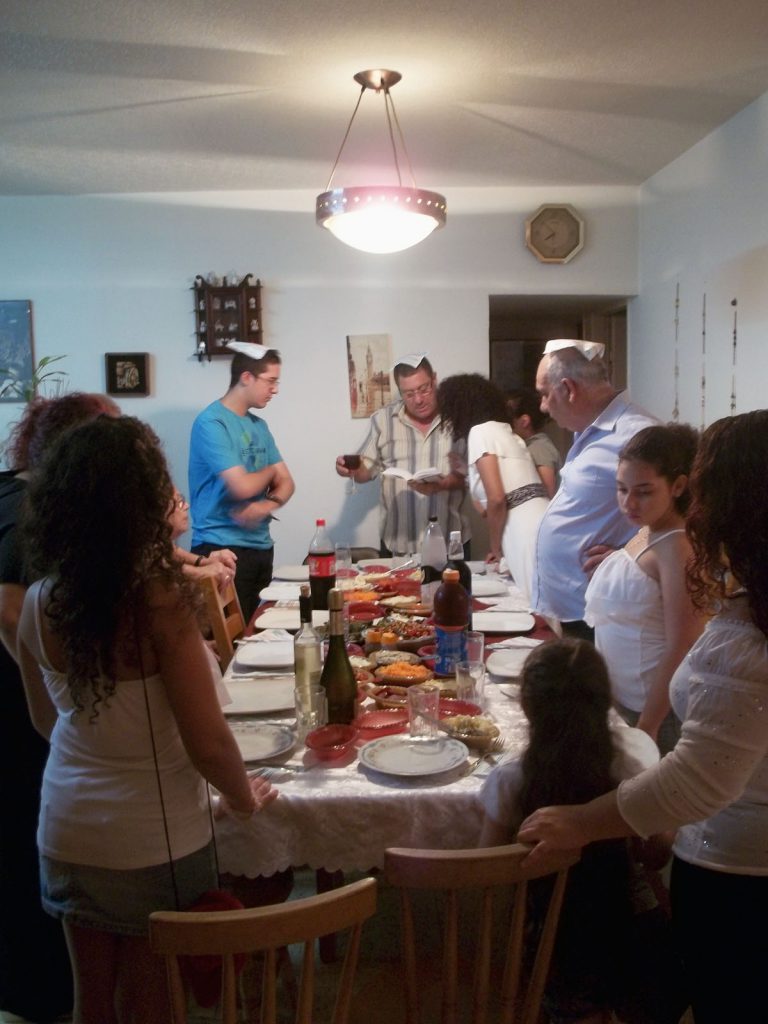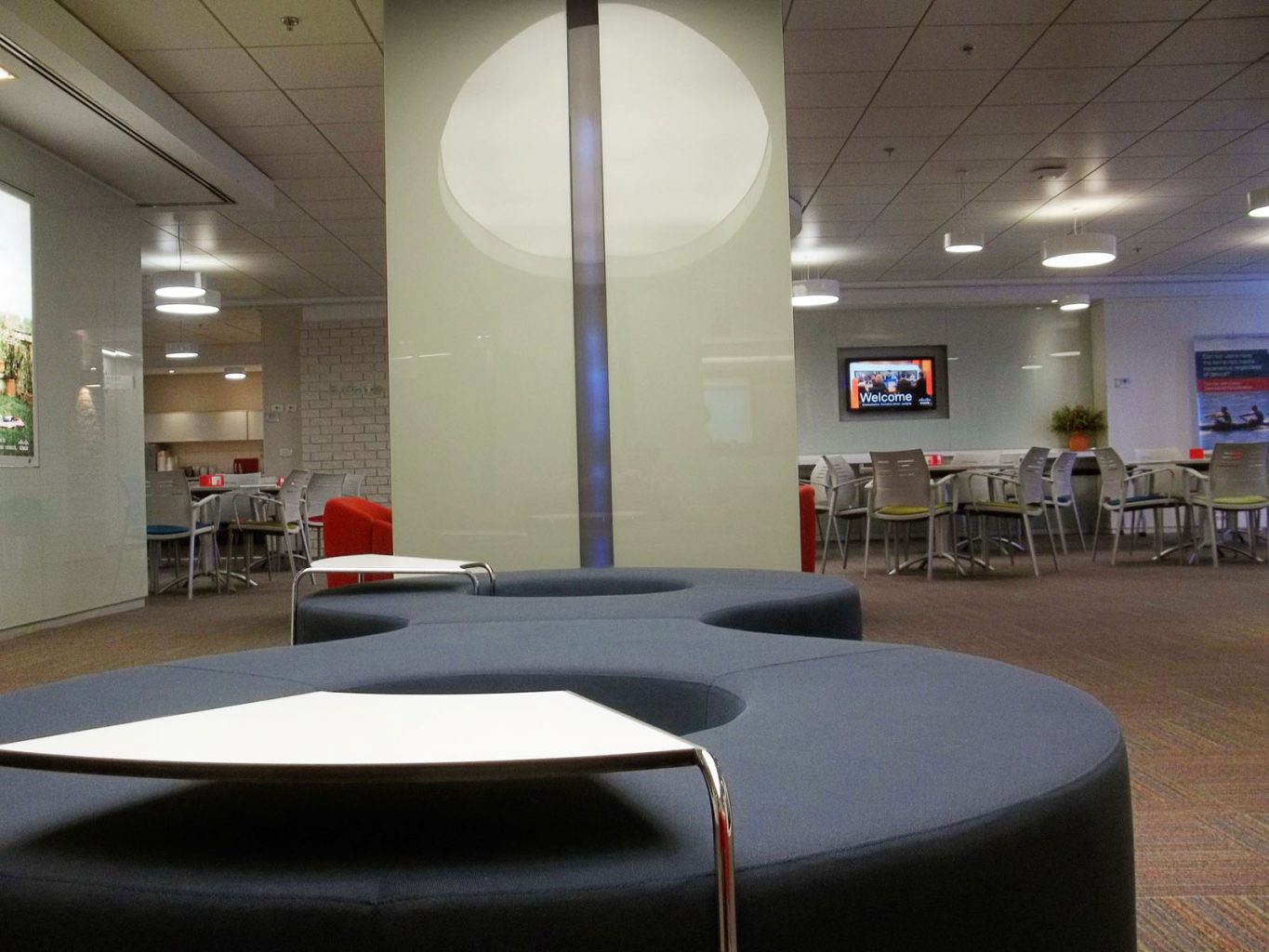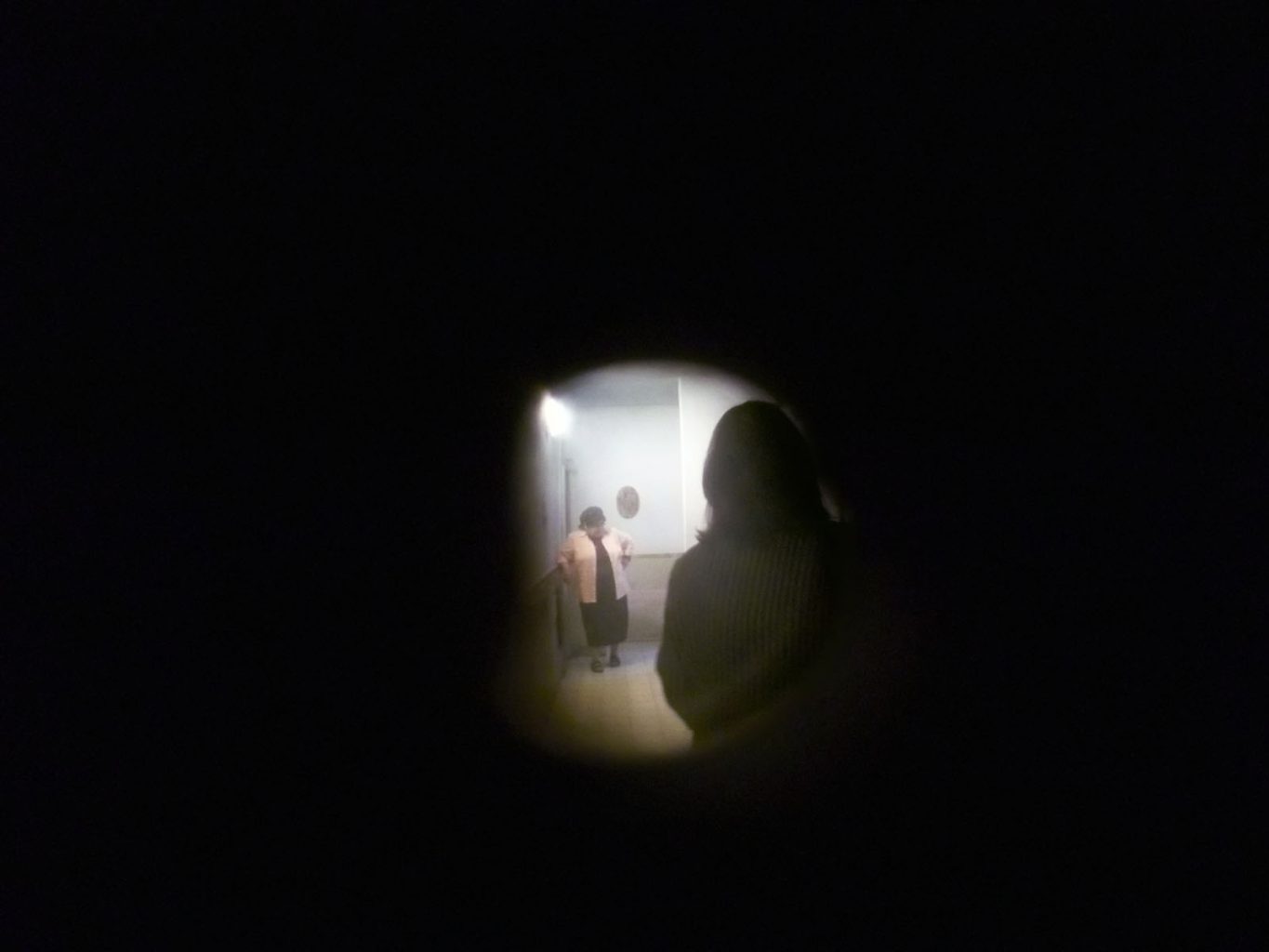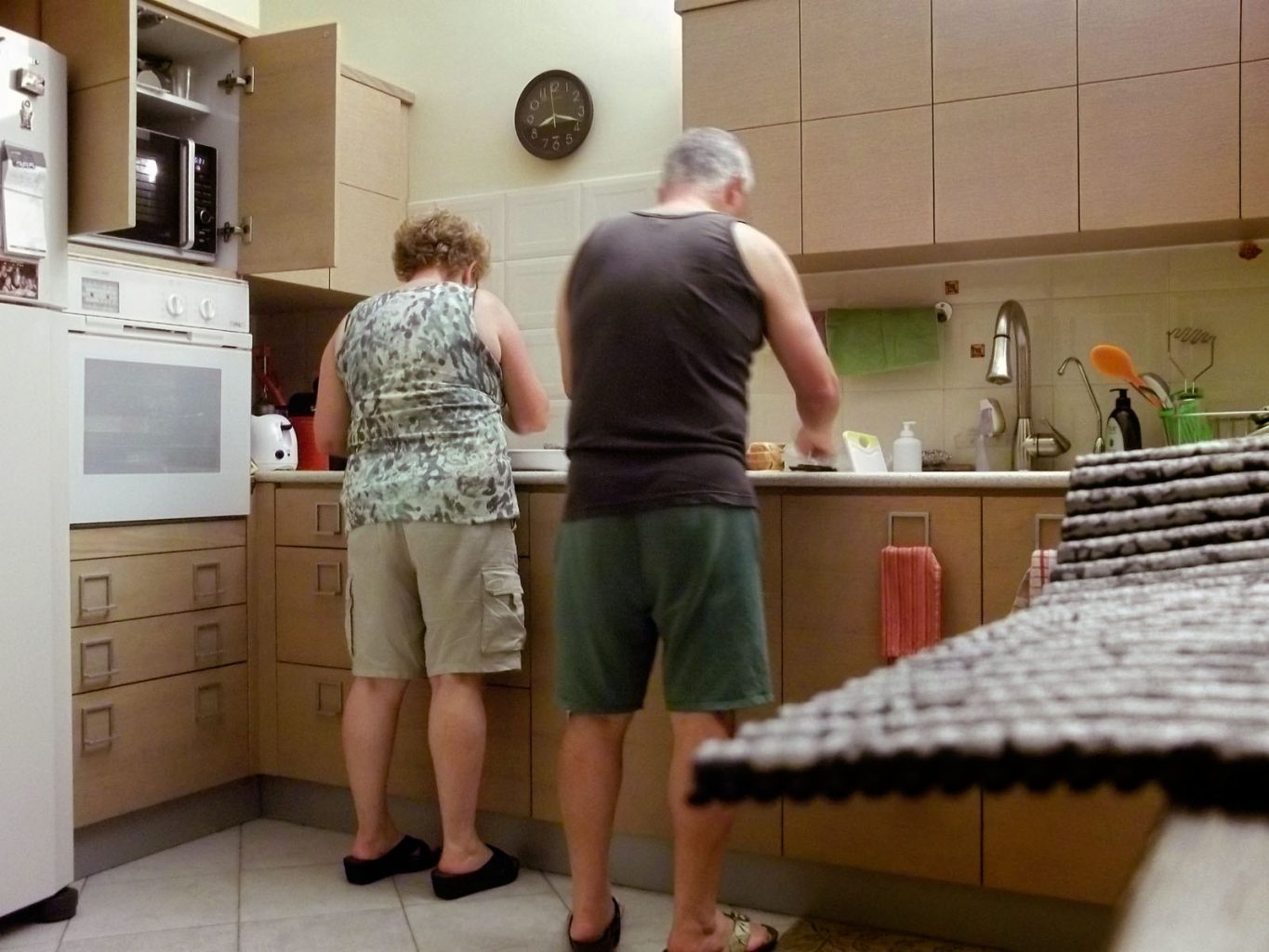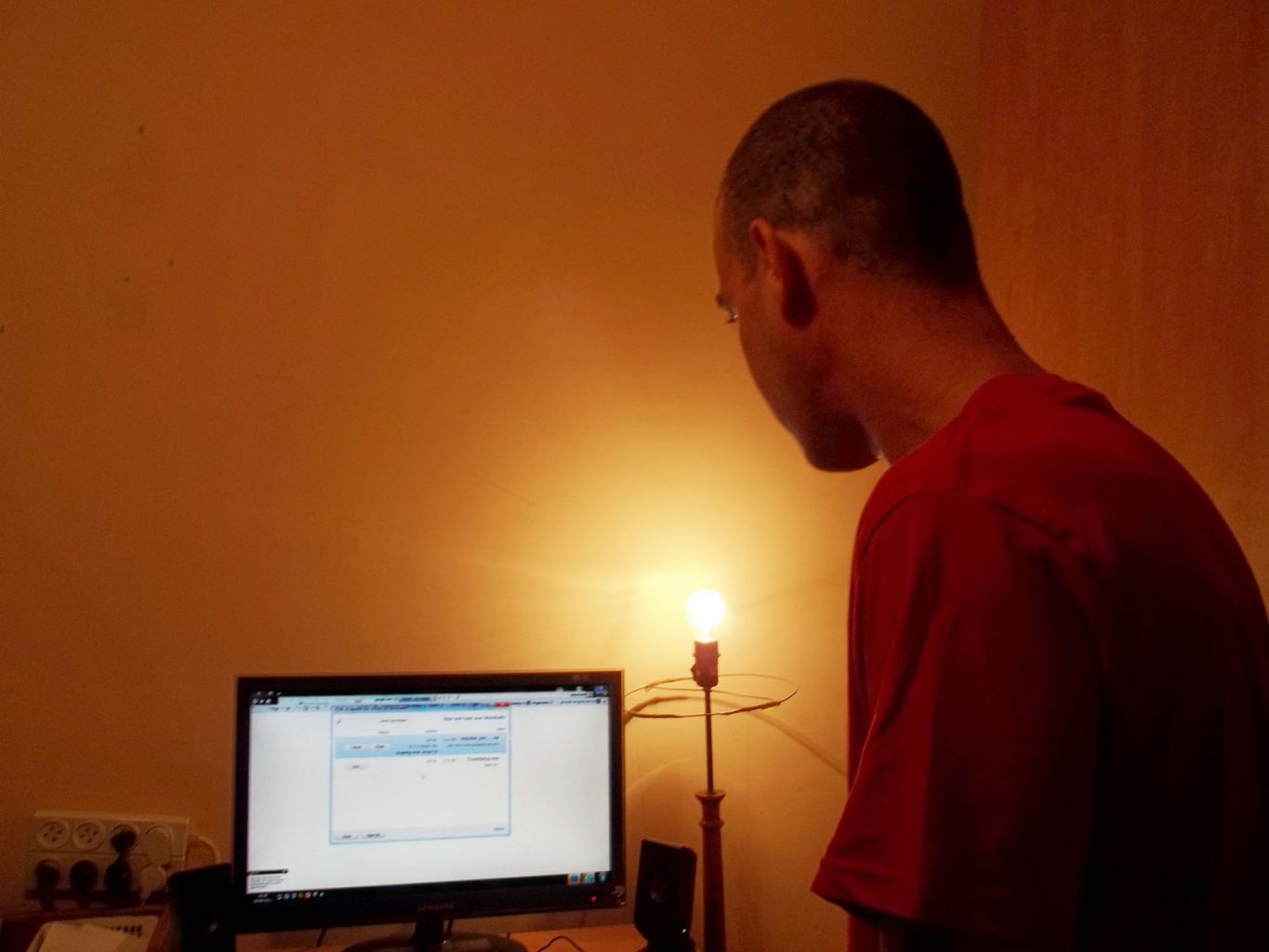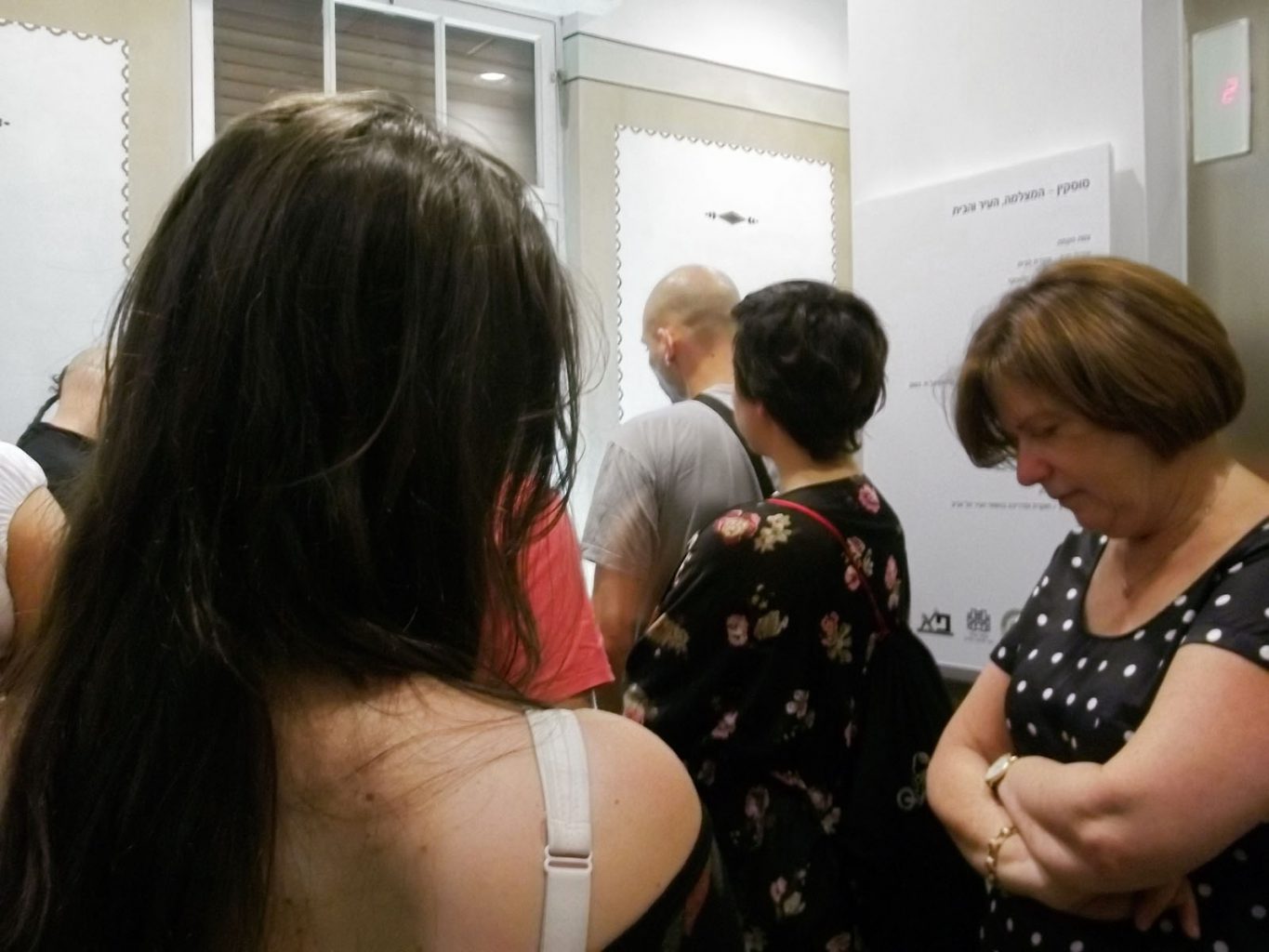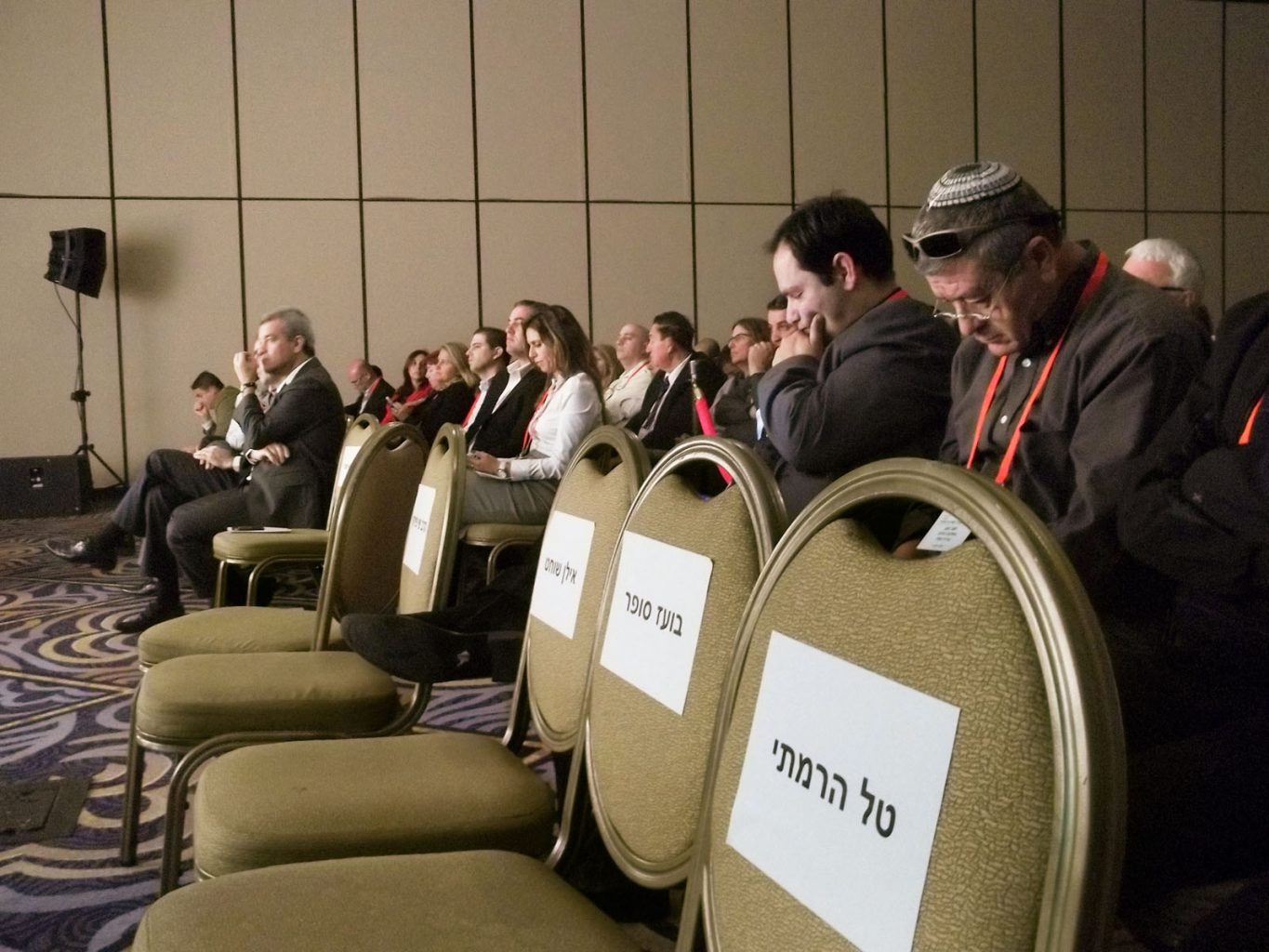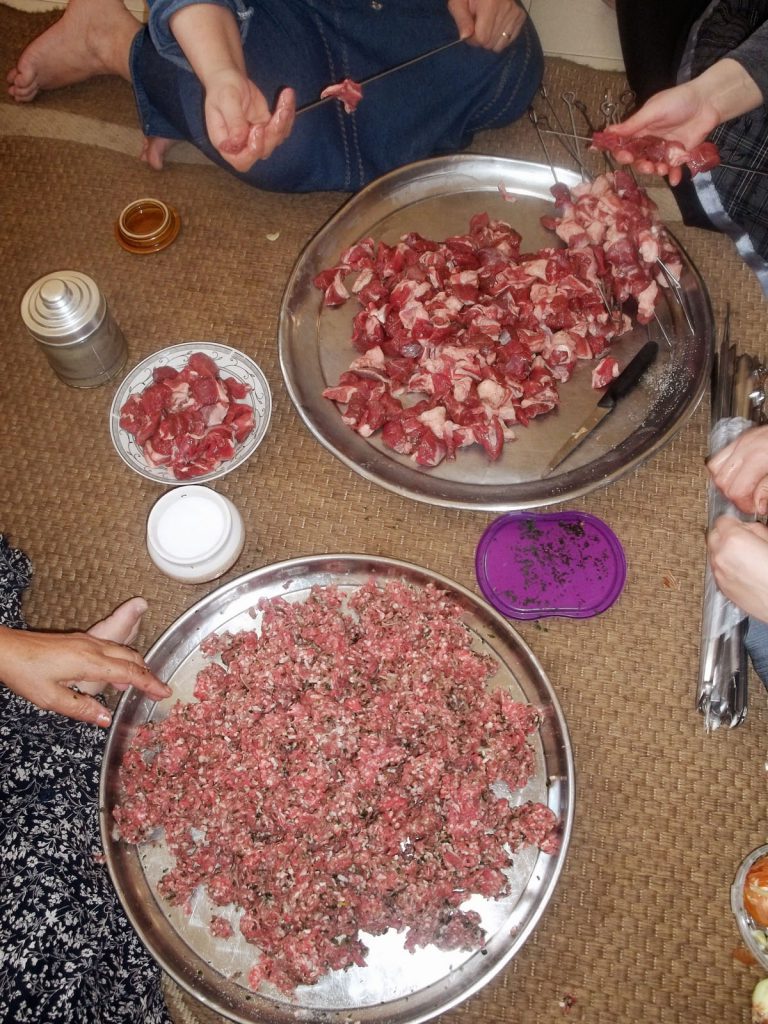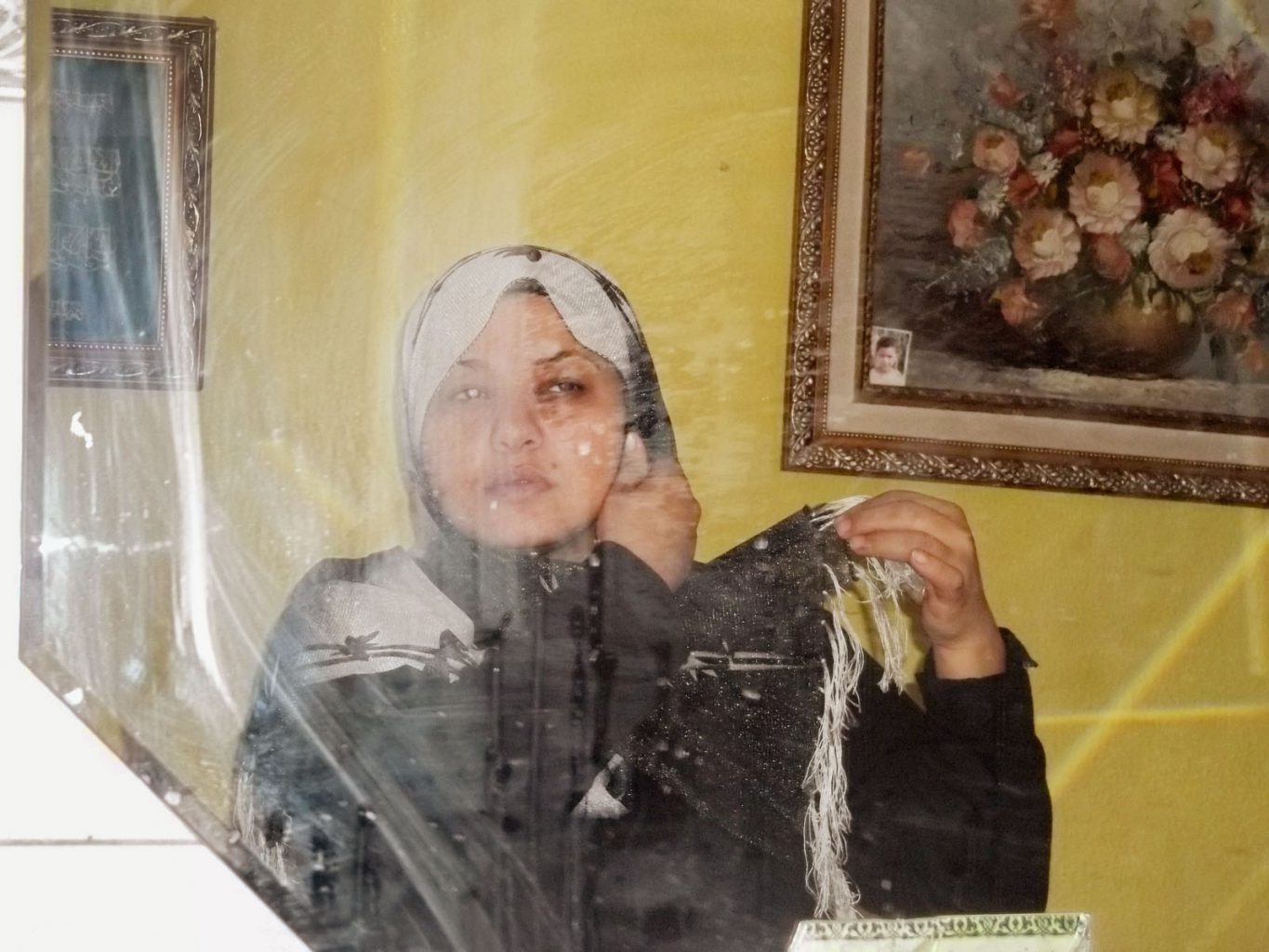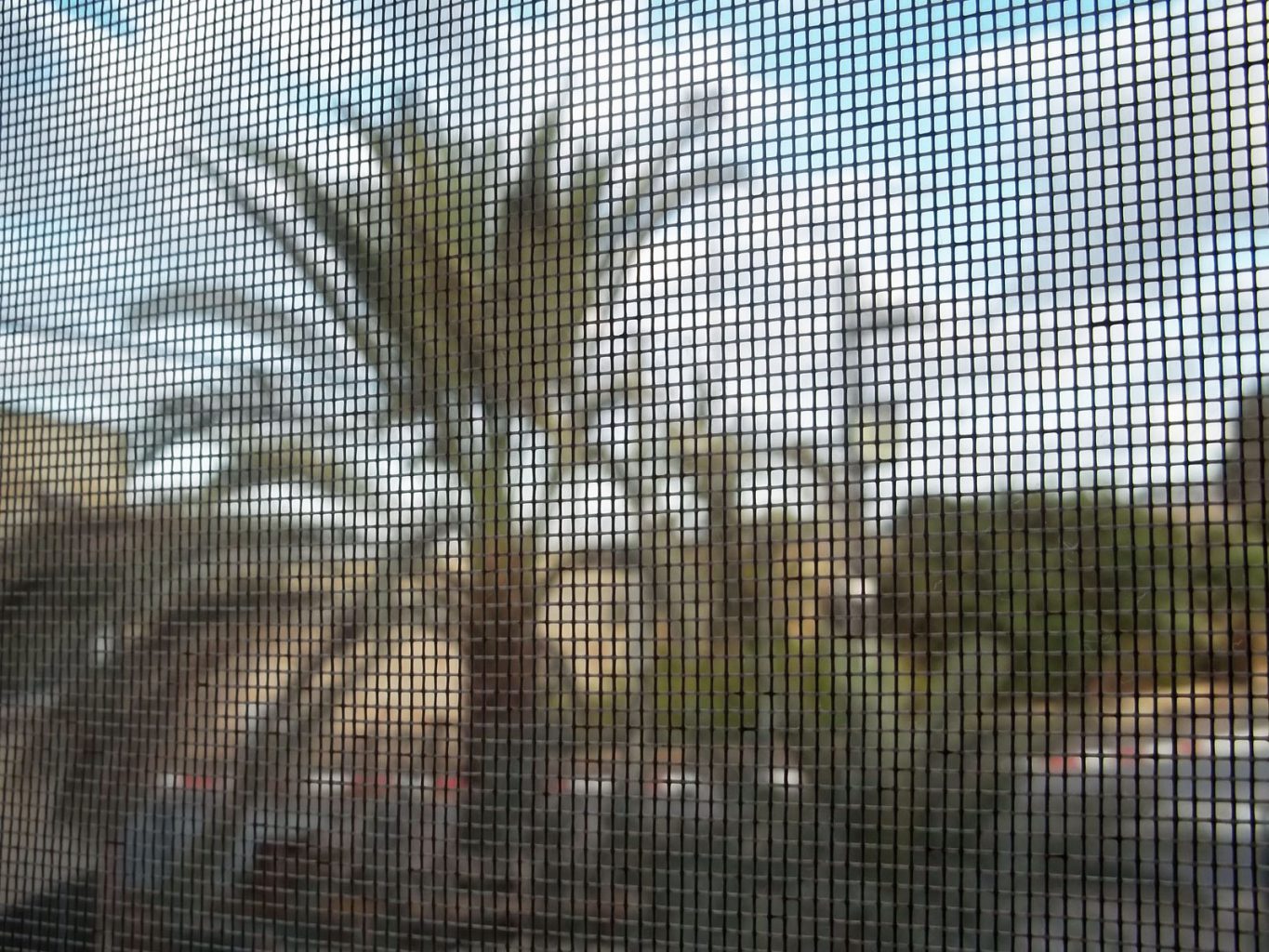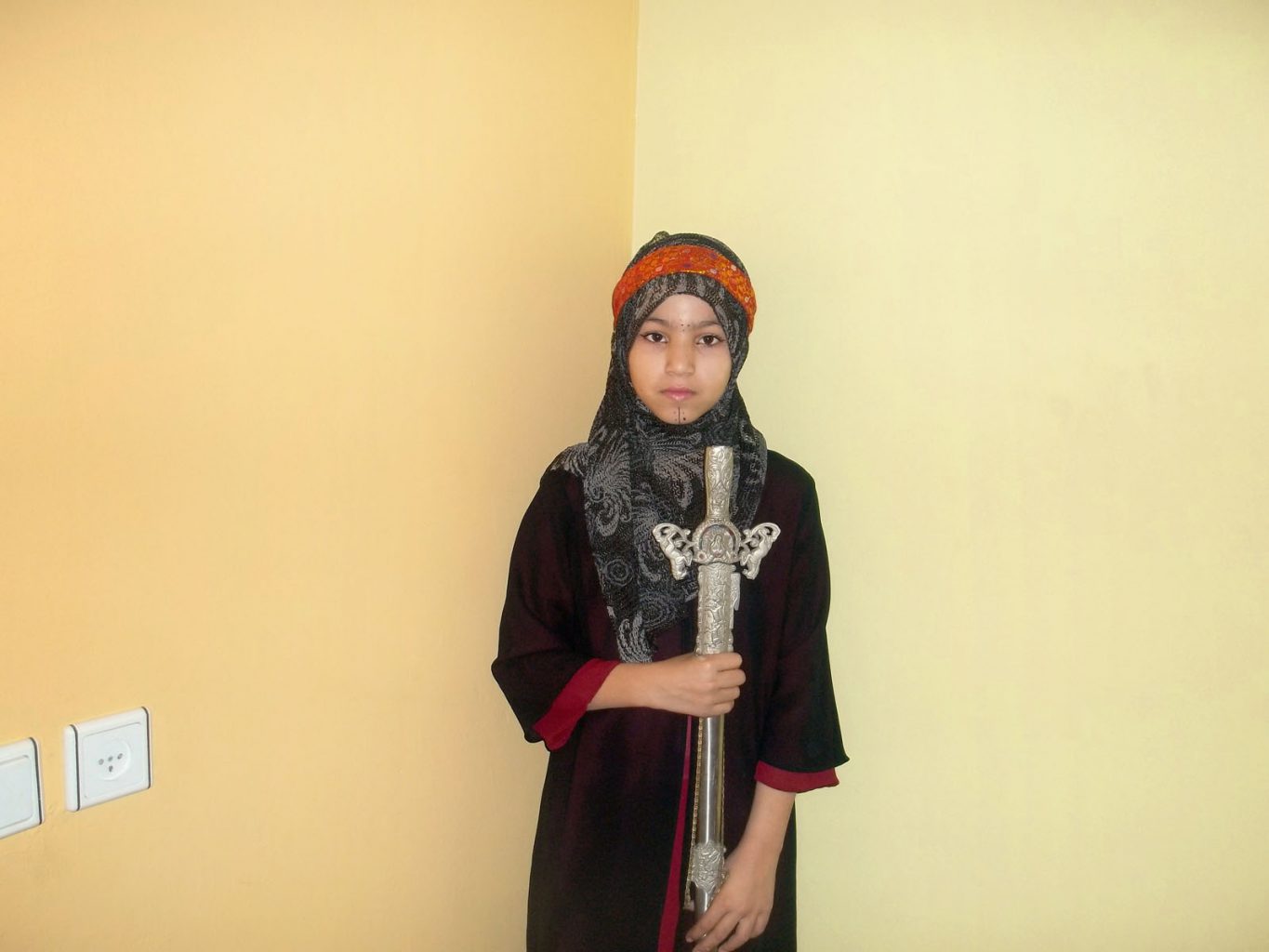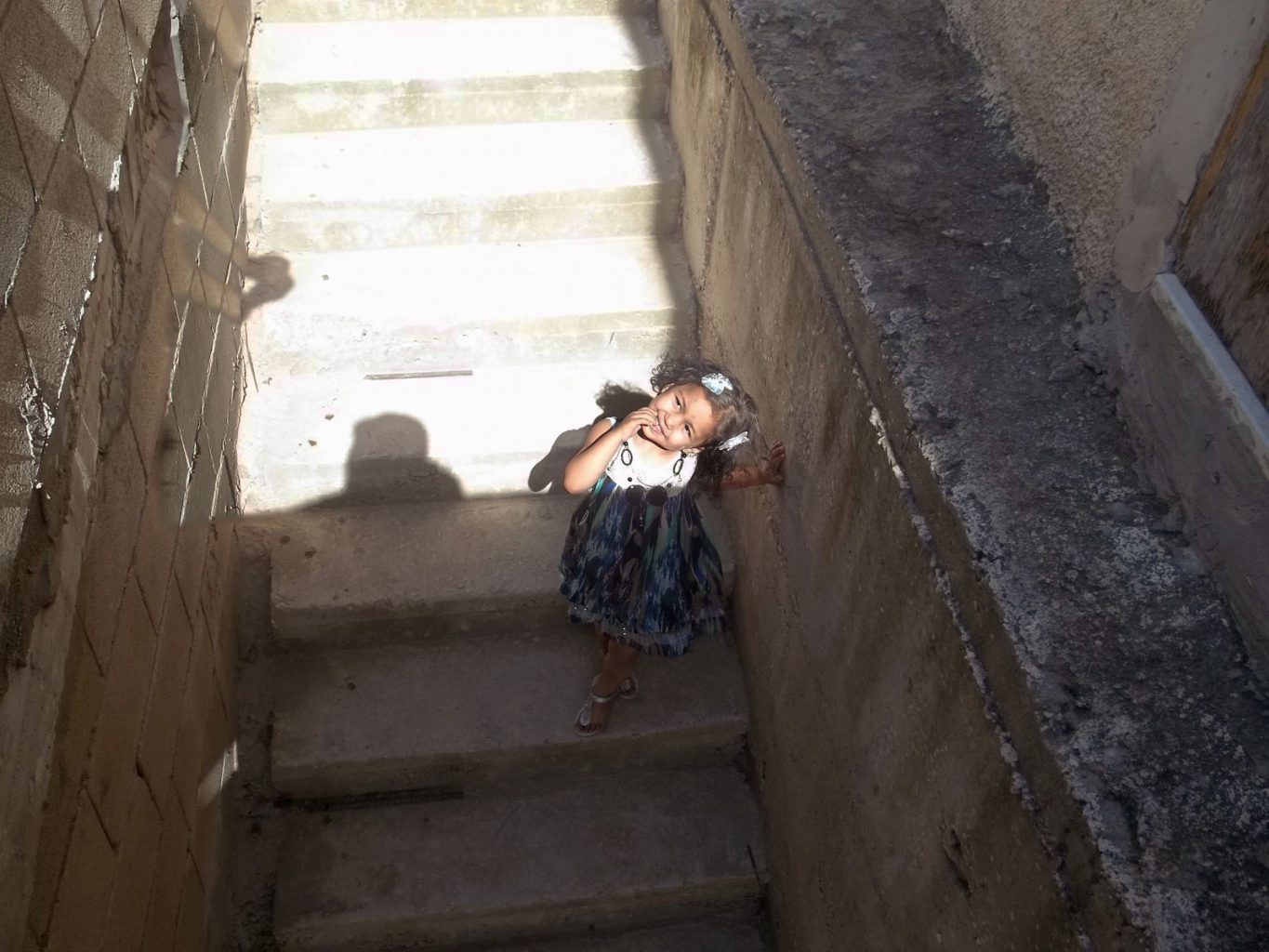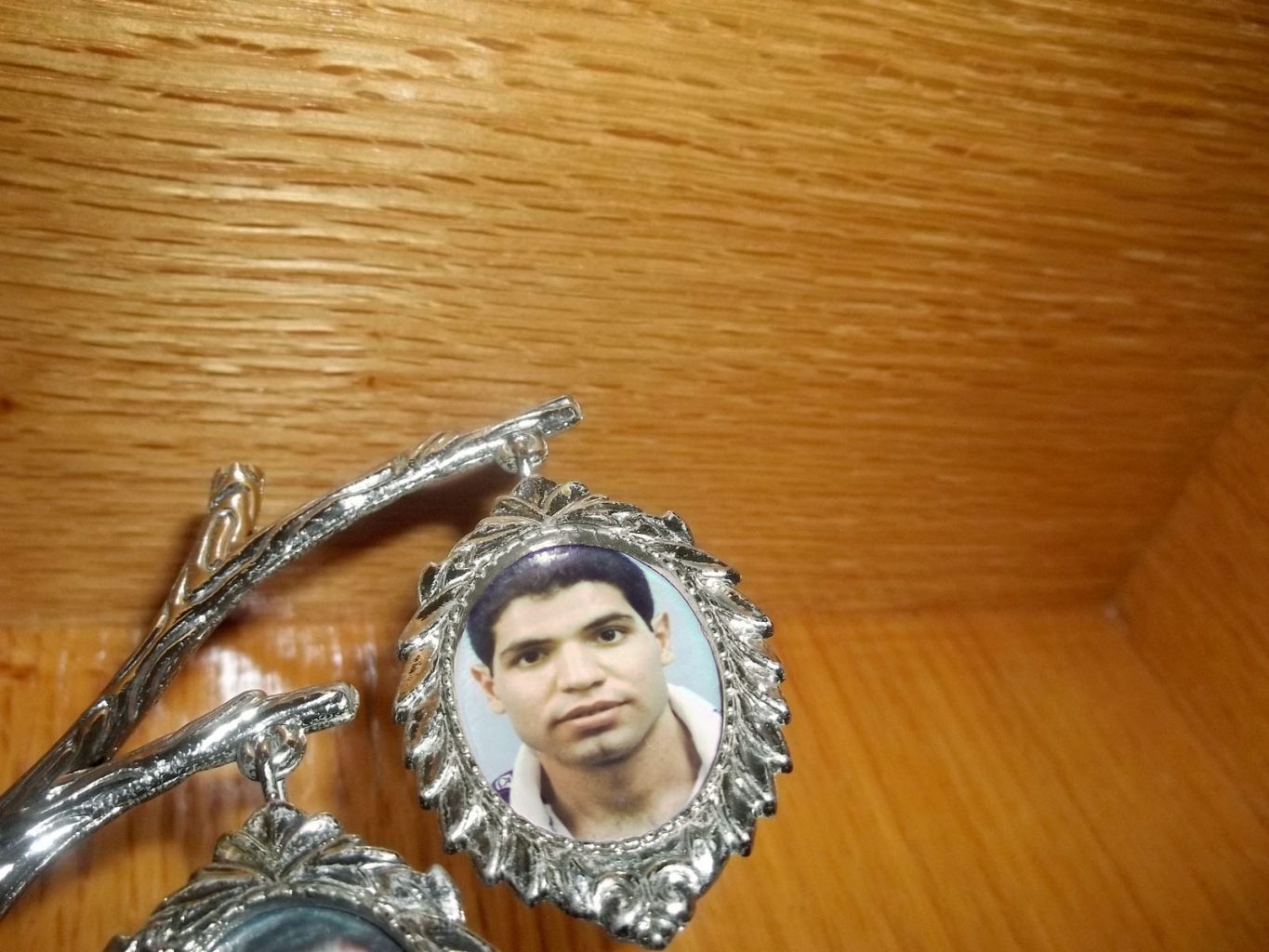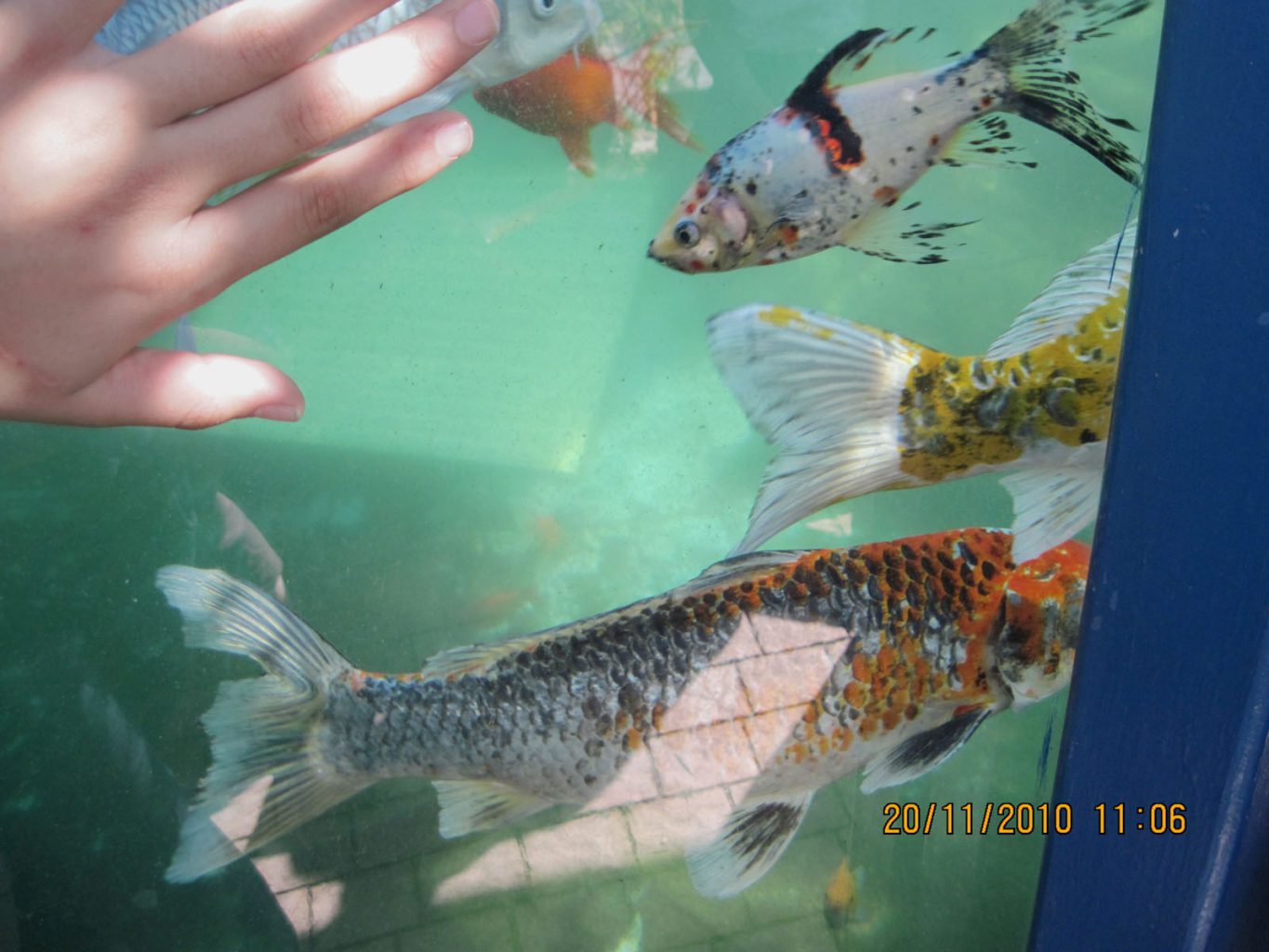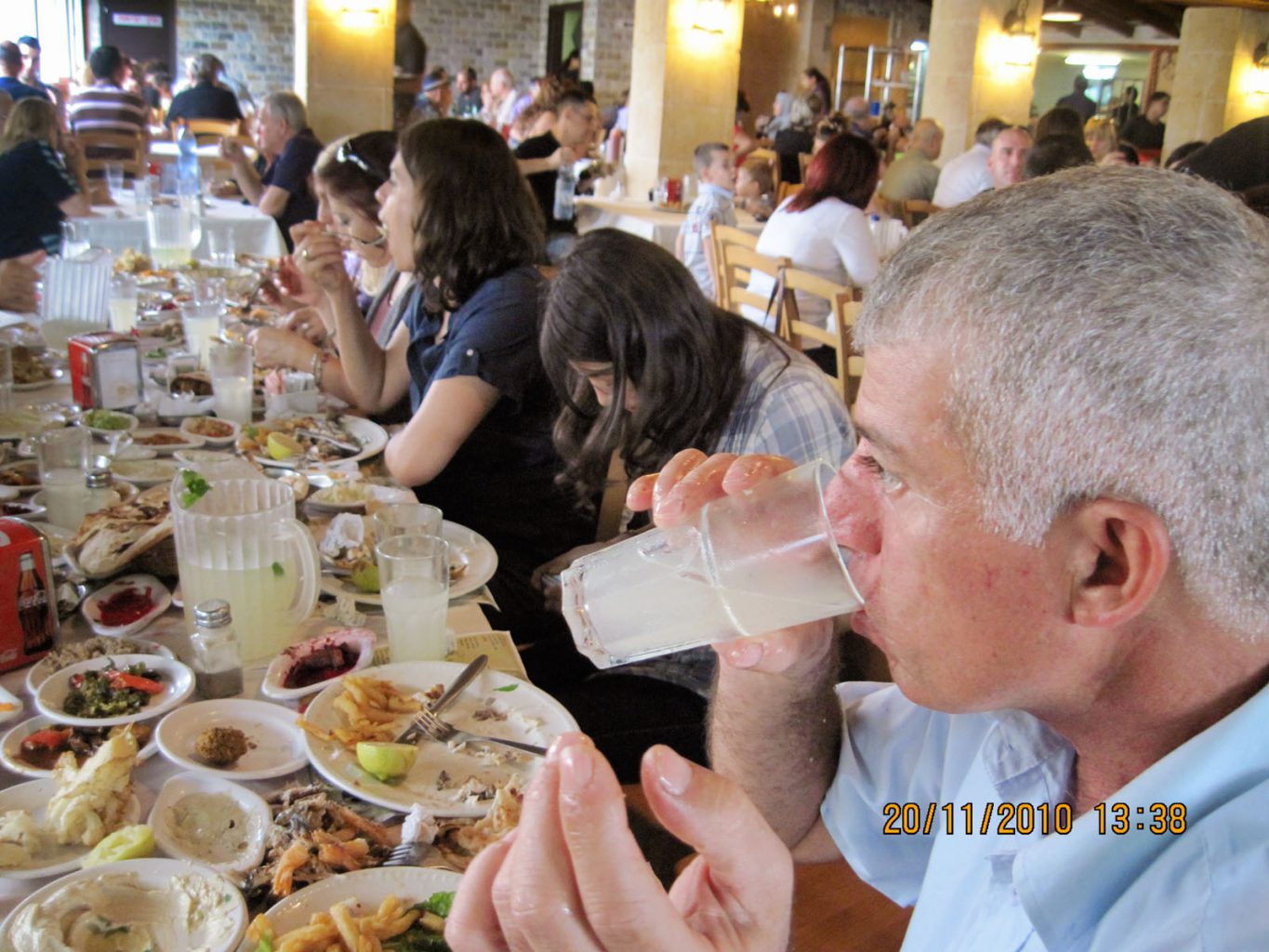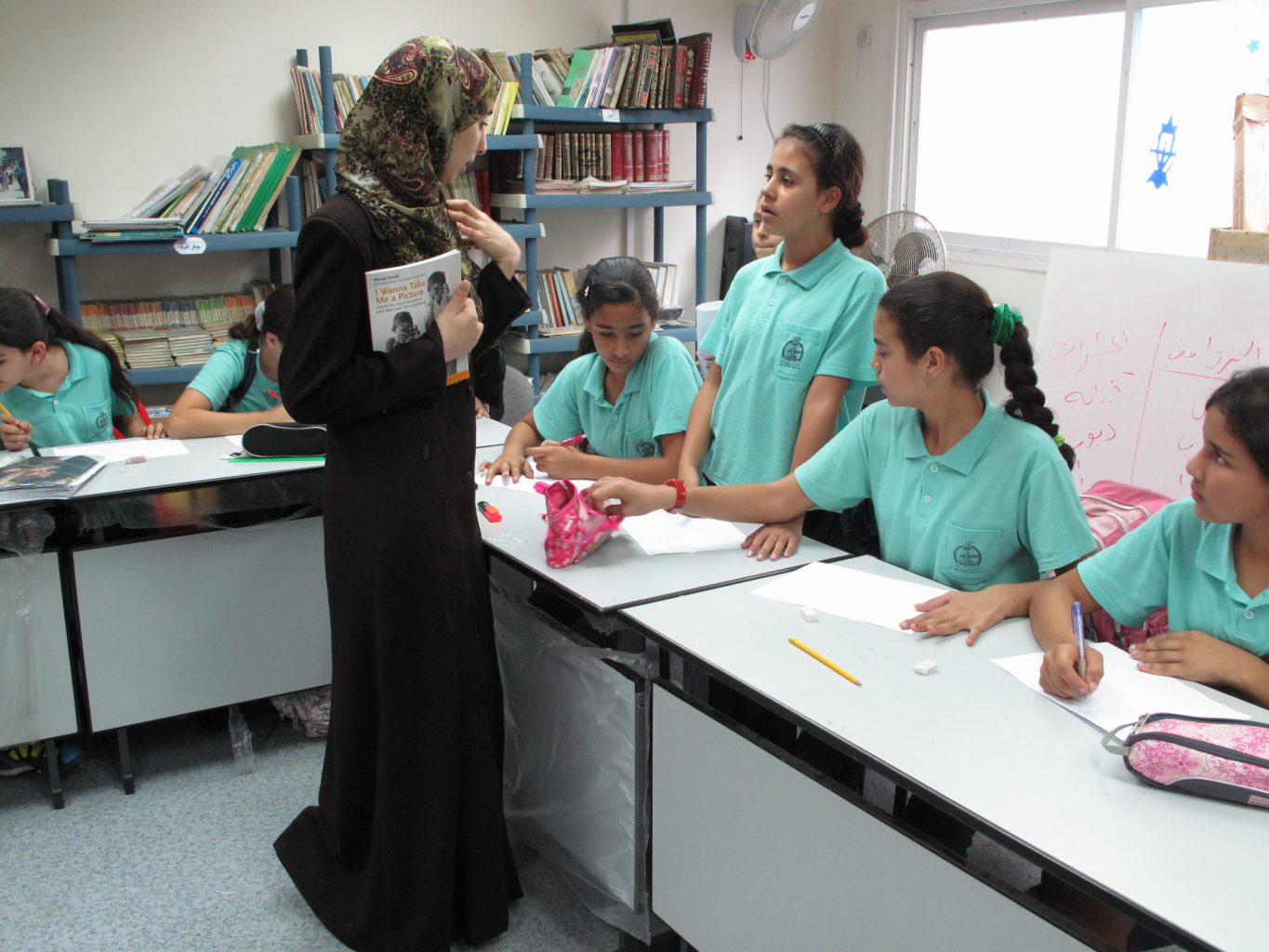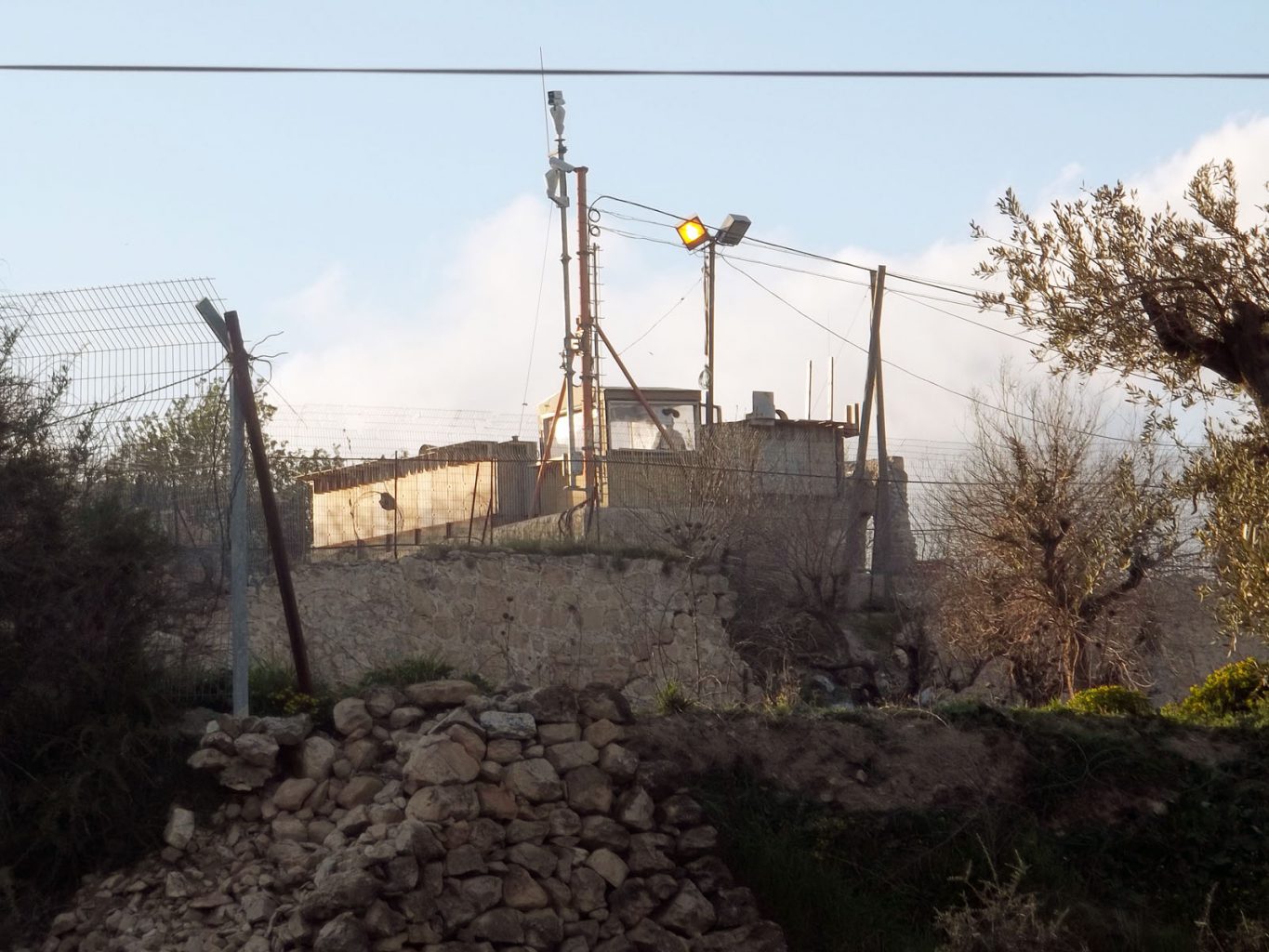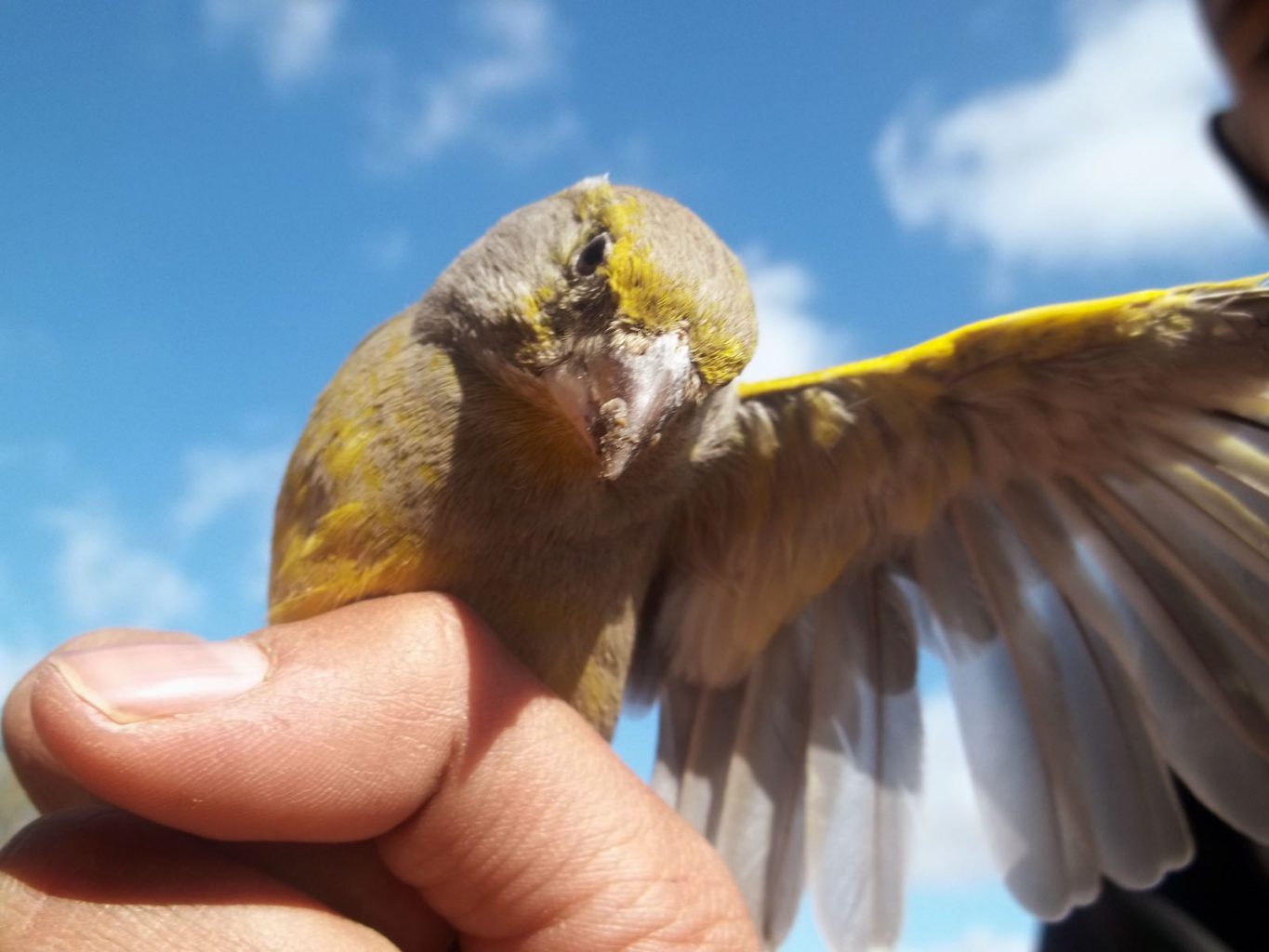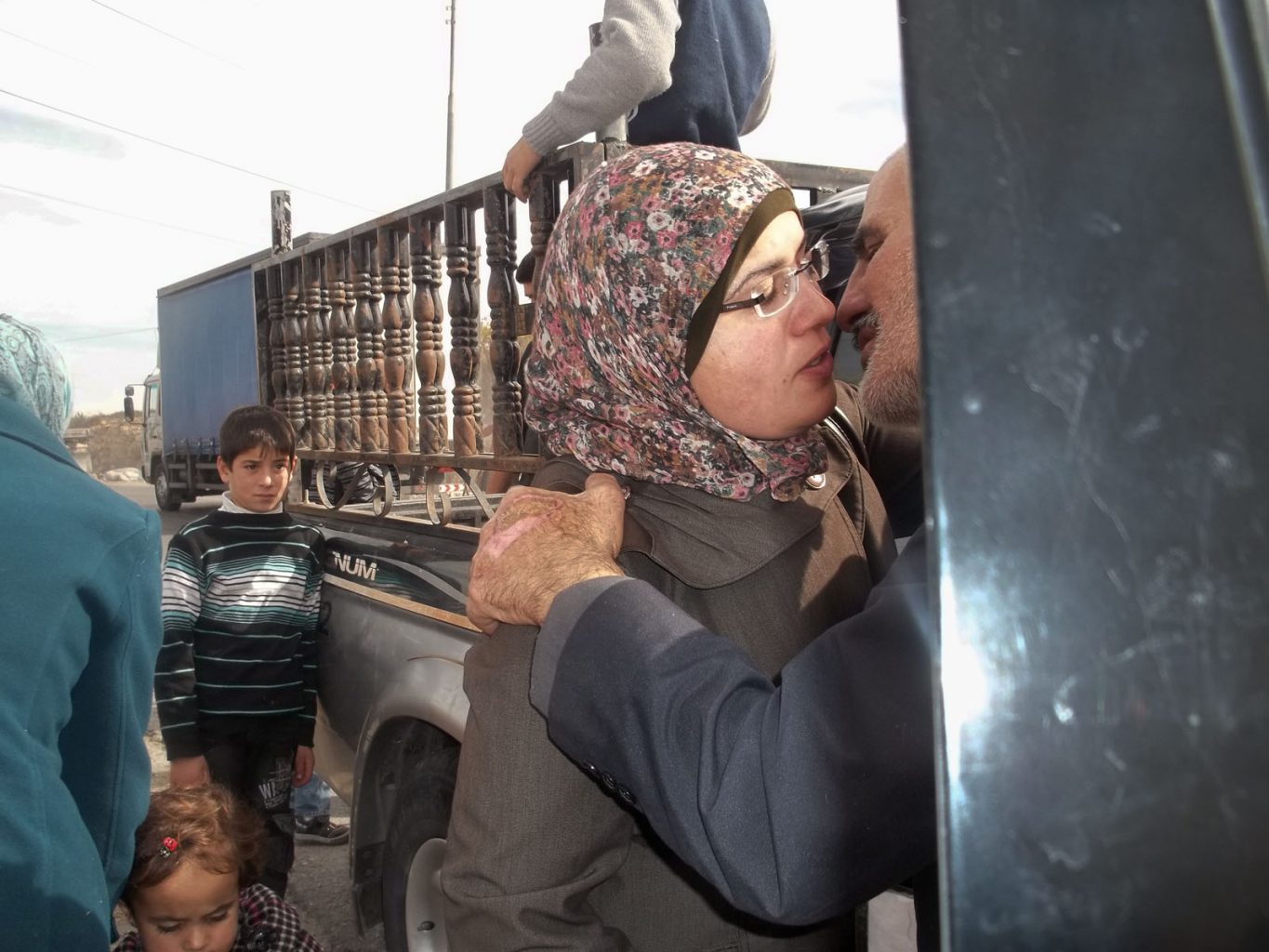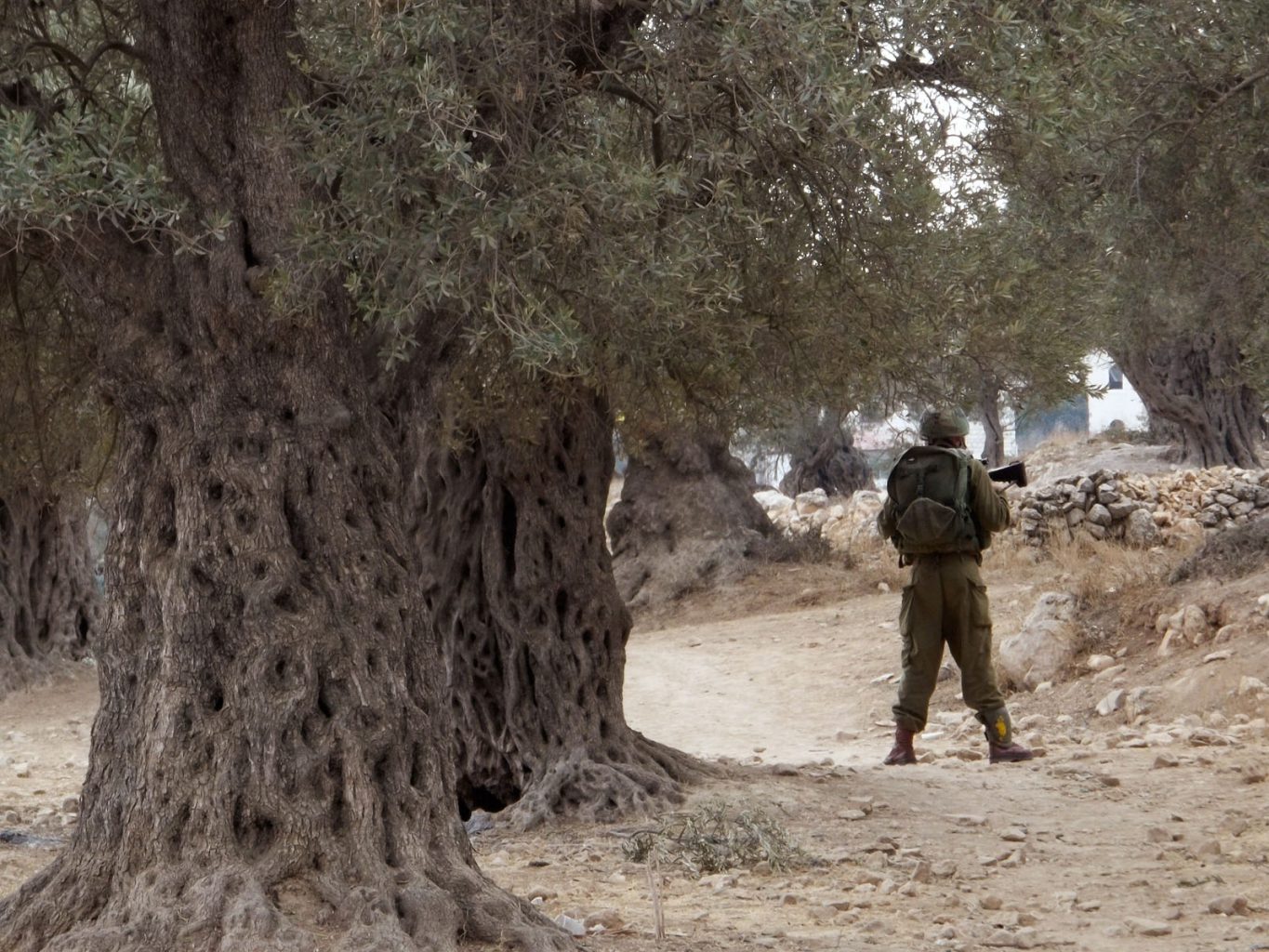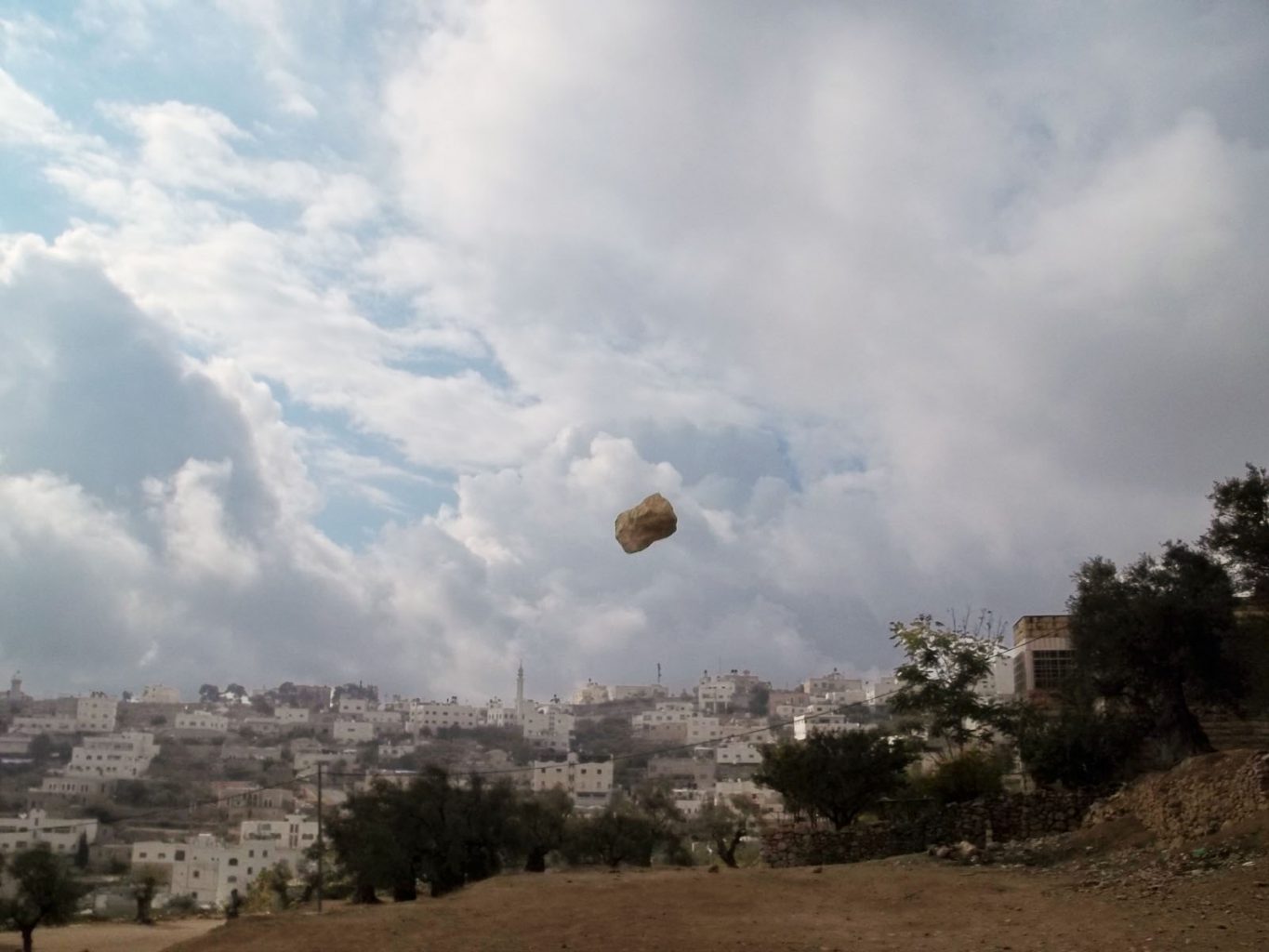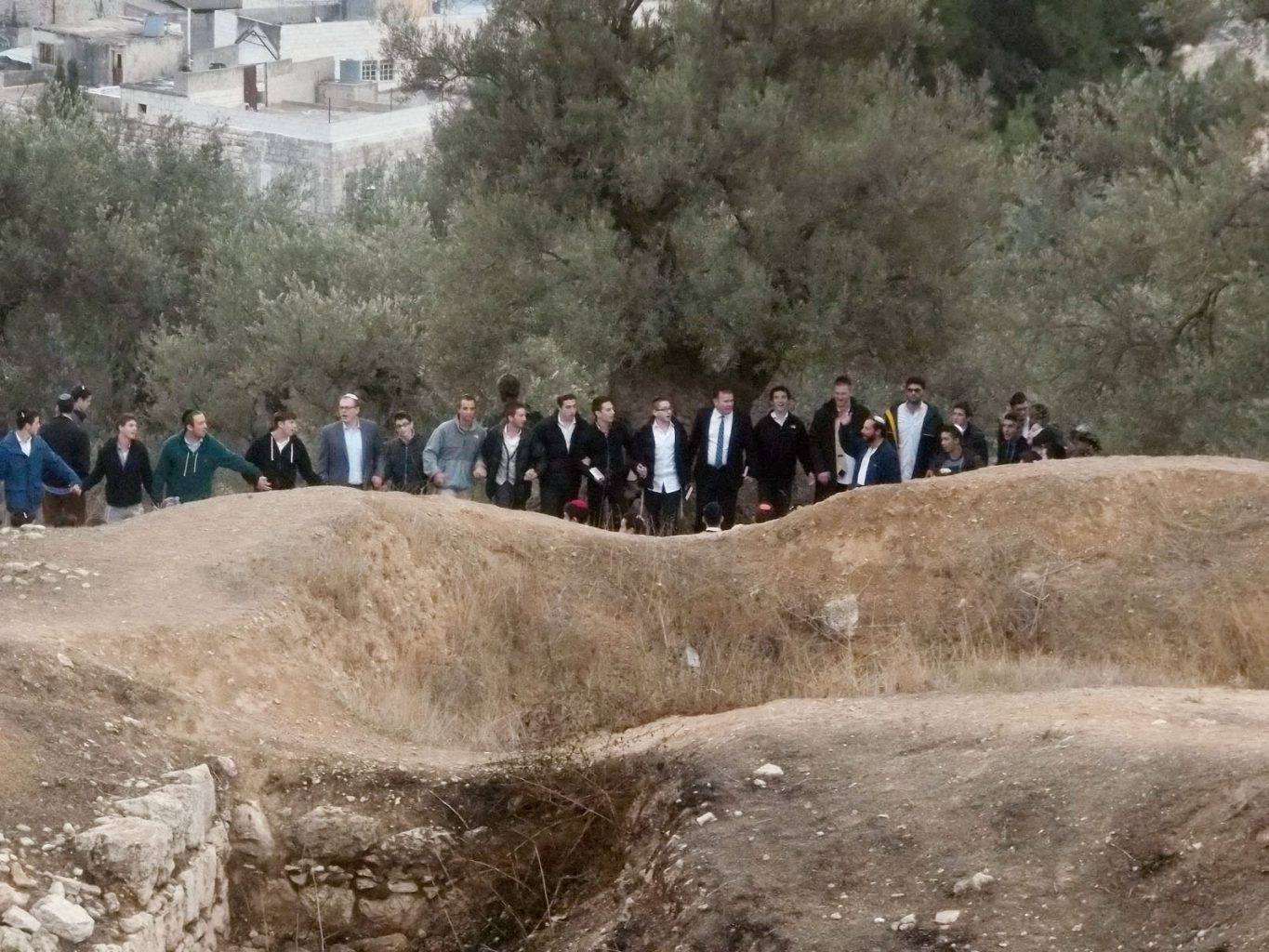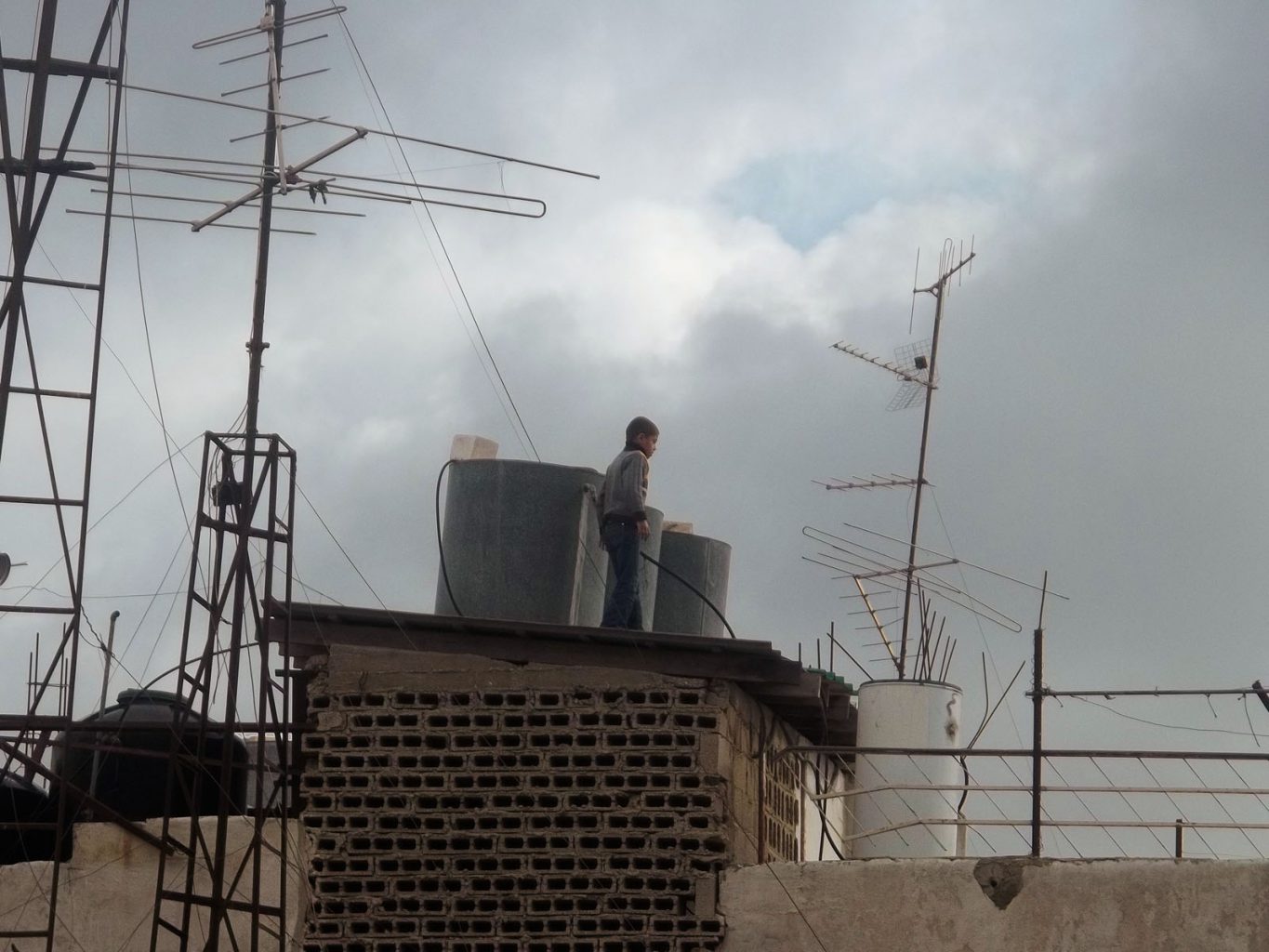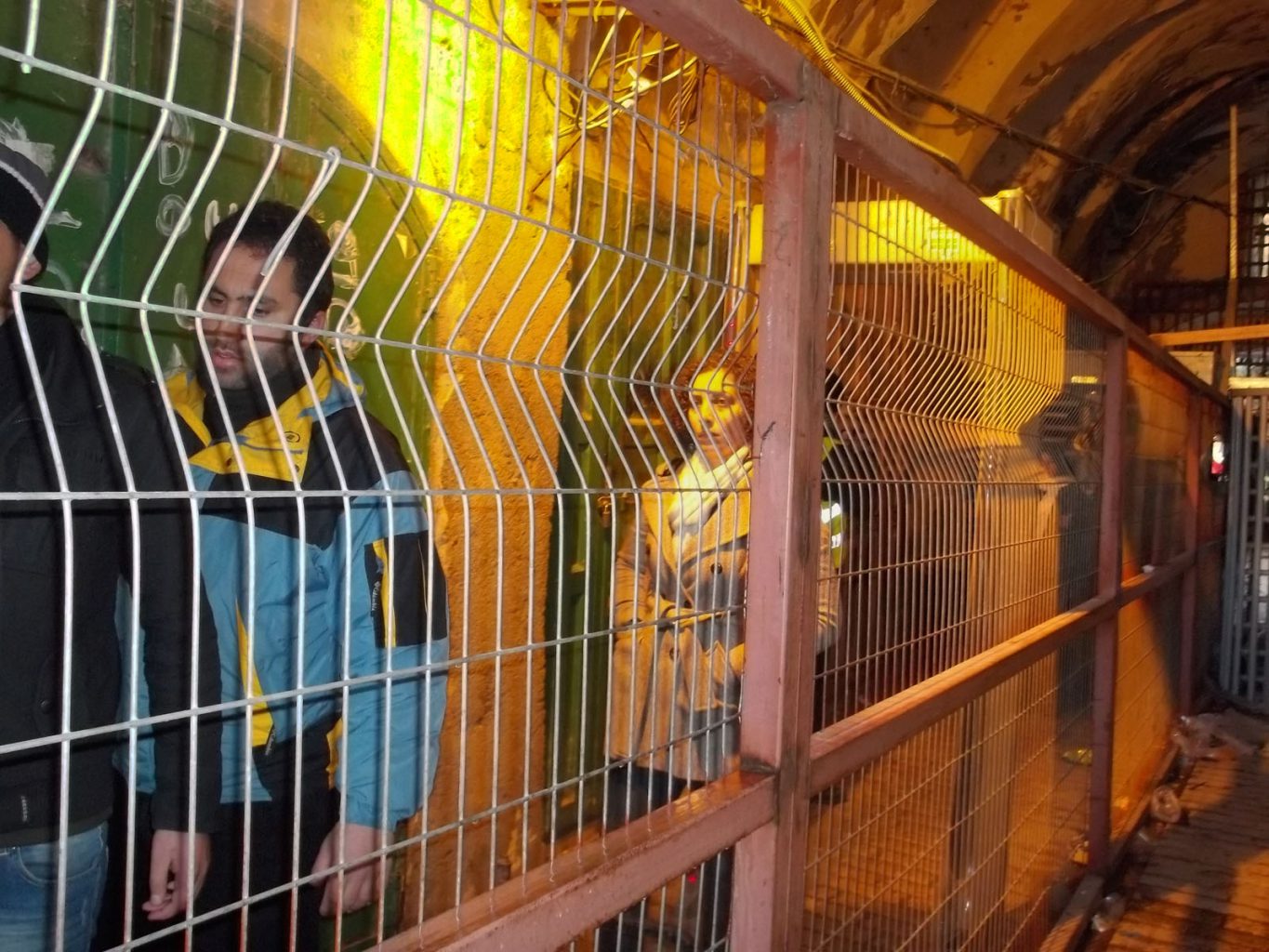Israel/Palestine, 2010-2013
Over the course of three years, I made ten trips to Israel and the West Bank, and stayed for three to four weeks each time. As the project grew, I worked with more and more communities—14 in all, and recorded people talking about their lives. I combined the pictures and testimonies from each of my collaborations into a kind of narrative atlas, where maps, photographs, and words convey an insider’s point of view; this atlas would tell different stories of people’s lives from various regions and 14 cultural groups in Israel and Palestine.
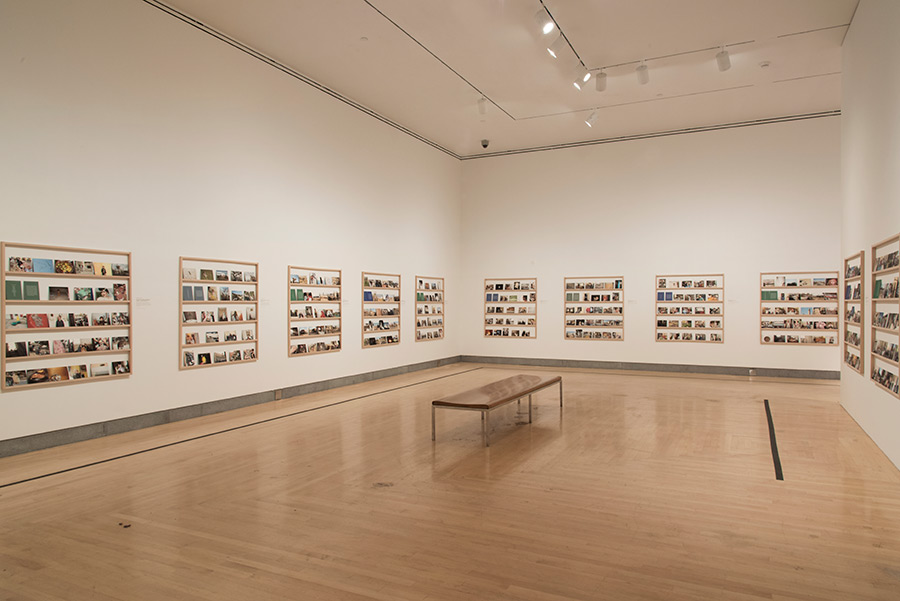
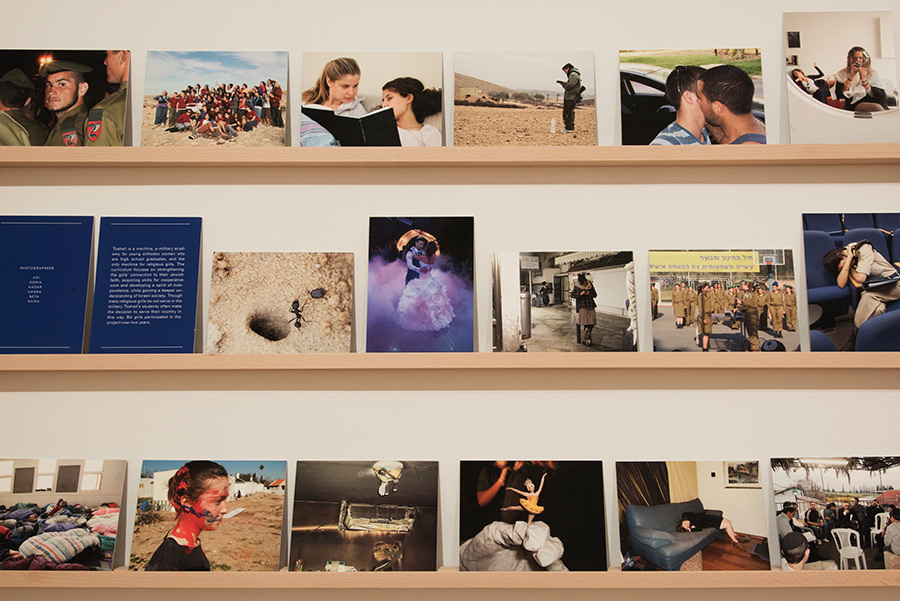
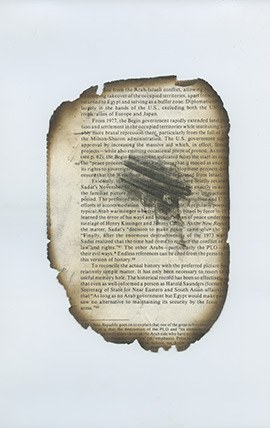

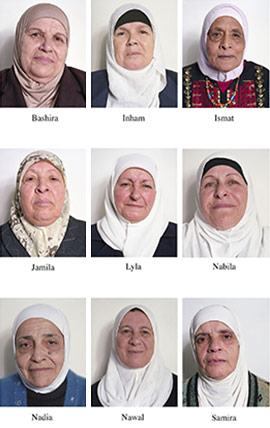
Office of Social Affairs, East Jerusalem
WOMEN ELDERS
PALESTINIAN ARABS, WITH ISRAELI ID
East Jerusalem designates the part of Jerusalem captured and annexed by Jordan during the 1948 Arab-Israeli War. As soon as the Jordanians took possession of the area, they expelled its Jewish residents. Then, when thousands of Palestinians were expelled from West Jerusalem by the new Jewish state, they resettled in East Jerusalem.
In the 1967 Six Day War, Israel recaptured and eventually annexed East Jerusalem. Sheikh Jarrah became a highly contentious place and remains so to this day, notorious for the increasing influx of Jewish settlers and their appropriation of the houses of longtime Palestinian residents.
Our lives, they’re too much—too much, I swear. It breaks your hear that you can’t lead a regular life in your own home. It’s just torture.
I’m a Jerusalemite. My parents lived in Jerusalem. But I moved to Haifa, where my husband and brother-in-law had shops down by the port. In ’48, we were driven away and I went to Jordan. They kept my husband in prison for nine months. Later on, there was an exchange of prisoners. Then The Palestinian Relief Agency came and conducted a census and gave us these houses.
Then, suddenly, the Jews moved in. It’s not even a family that lives there—it’s just a bunch of young guys. A year and four months ago, we saw them at the door. They broke in. God knows where the key is. The settlers burned the kids’ beds to keep themselves warm, they stole every stick of furniture in the house, and they’re still harassing us.
–Nadia, Member of the Women Elders group
Melach Haretz Military Academy, Ein Gedi, Dead Sea
MILITARY ACADEMY STUDENTS
JEWISH ISRAELI
Some Israeli high school graduates prepare for mandatory service in the Israel Defense Forces by attending a military academy, or mechina. The special aim of Melach Haretz (“Salt of the Earth”) is to educate at-risk young men from various economic and ethnic backgrounds. The hope is that their participation in the mechina and the military will help them integrate into Israeli society and adapt to civilian life.
The boys need to break down the stigma of self-hatred that can result from the negative portrayal of Israeli society in the media. We need to remember that this program is Zionist, is Jewish. How are you going to deal with this identity—your identity?
— Tsurit, Teacher at Melach Haretz

Blink Social Media Agency, Tel Aviv
EMPLOYEES
JEWISH ISRAELI
Blink is the foremost social media agency in Tel Aviv. Its thirty or so employees specialize in the coordination of consumer research and products, and in media content. Clients such as Cisco and Oracle rely on Blink to help them track and understand information and manage their corporate presence in social media. Blink is located in Silicon Wadi (valley), a hi-tech region considered second in importance only to California’s Silicon Valley.
At some point, I started to spend all day on Facebook and fell in love with it, and thought, “Wow, this is my dream job.” Blink is the best web media company in Israel, so for a year and a half, I focused on getting a job there. When I saw they were looking for people, I sent in my CV. I can remember what I was wearing the first day I came here for my interview: big coat, red hat. They called me back to meet the owner the same evening, and I was hired. And now it’s almost ten months I’m here.
— Hagar, Graphic Designer
The State School, Village of Sulam, Jezreel Valley
6TH GRADE STUDENTS
PALESTINIAN ARAB, WITH ISRAELI ID
In the early days of the State of Israel, many of the villages in the Jezreel Valley, sixteen kilometers north of Nazareth, were populated by the Zoabi clan, who had come from Jordan a hundred and fifty years ago. The new state ousted anyone who wasn’t Zoabi until only nine Zoabi villages, Sulam among them, remained. Today, this is a farming village of 2,500 people.
We Palestinians live in congested, overcrowded villages; we have no roads; our children have nowhere to play; we stack floors on top of buildings—4 floors, 5 floors. Today, all everyone talks about is the overcrowding and where they’re going to live.
— Masarwy, History Professor
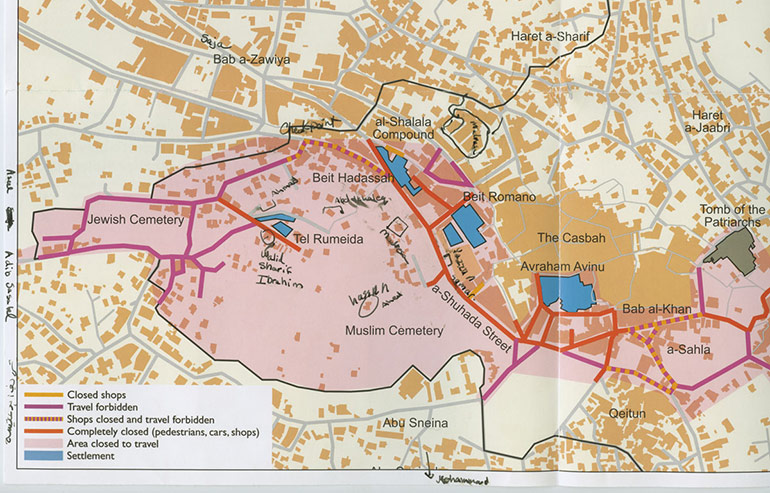
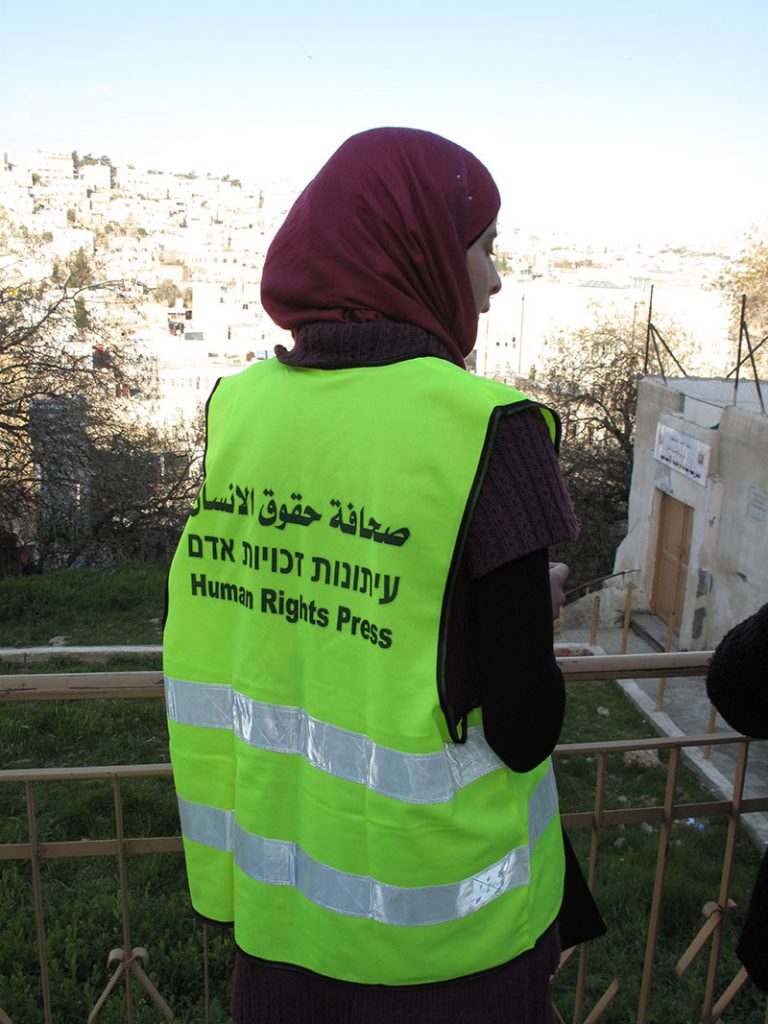
Youth Against Settlements, H2, Hebron, West Bank
CHILDREN AFFECTED BY NEARBY SETTLEMENTS
PALESTINIAN
The West Bank constitutes the greatest part of Palestinian territory and Hebron is its largest city. Hebron has long been viewed as one of the four holy cities of Islam. The city is also considered the second holiest Jewish site after the Wailing Wall in Jerusalem.
The Sumoud Challenge Center houses Youth Against Settlements, a group of volunteers working under the aegis of the Palestinian Authority. Thirty feet from an Israeli army outpost that protects a nearby settlement home, the Center overlooks Shuhada (Martyrs) Street and sits amid olive groves that date back to the time of the Roman Empire.
My family comes from Hebron. I have a very big family tree, which shows that our family originated in Hebron, right here in Israeli occupied H2. My family still lives in the same area, but got bigger and bigger, so someone had to move to another house—find a new place, a new life. Now, some of us live in H1, which is controlled by the Palestinian Authority. I don’t know how to say it in English, but we who remain in H2 are not able to control anything that’s happening in our lives. But we’ll never leave our family’s original property here. It’s ours and we have to stay in it.
— Tamar Altrash, Leader of Youth against Settlements
